
MANUFACTURING
MAY/JUNE 2024 ENGINEERING MANUFACTURING PRODUCTION COMPRESSED AIR DIGITAL COMPRESSED AIR MONITORING AUTOMATION
ADVANCED TECH MEETING THE NEEDS OF MODERN LABS?
PRODUCTION
HOW IS
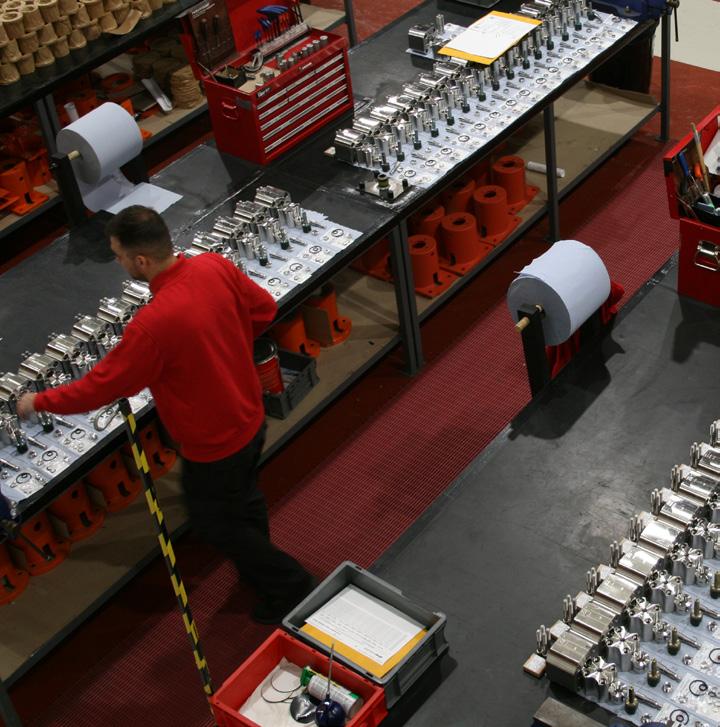
Valves for Hydrogen, Carbon Capture, Topside, Subsea, and Pipeline Applications.

Instrument & DBB Valves
• Manifolds, Needle, Check and DBB Valves to 22.5K psi
• Cryogenic

• Severe Service 650ºC, 10K psi
• Forged & Bolted Construction

Hydrogen & Carbon Capture Valves
• Instrumentation, Ball, Needle and DBB Valves for Hydrogen and Carbon Capture Applications
• Pipeline Ball Valves upto 18”


Pipeline Valves
• 1” to 20” Bore Size
• High Temperature
• High Pressure
• Cryogenic
• API 10K Design



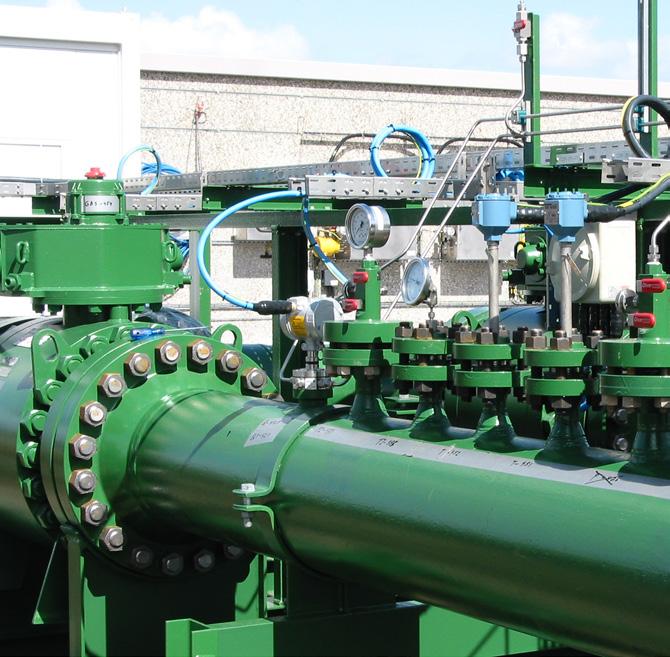


• 10K Ball Valves for Hydrogen Fuelling Stations



Subsea Valves
• Diver & ROV Operated Needle Valves
• Ball Valves Upto 15K
• Manual & Hydraulic Parallel Slide Gate Valves 3/8”, 1/2”, 3/4” and 1”
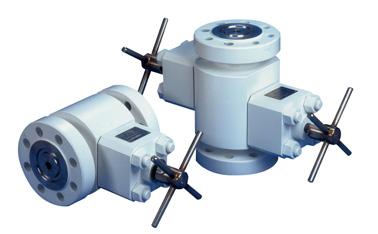
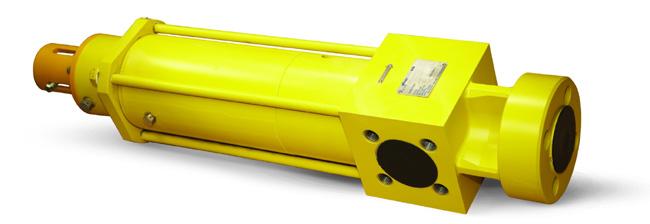


World-leading We
Manufacture Valves for Global Energy Projects. To Find Your Local Supplier, Contact Us Today.
+44 (0)1565 632 636 | sales@valves.co.uk | www.valves.co.uk Reliability Under Pressure Oliver Valves Ltd Parkgate Industrial Estate, Knutsford, Cheshire, WA16 8DX, United Kingdom We Innovate Valves. We Build Valves. We Are Valves.





Editor
Paul Attwood editor@mpemagazine.co.uk
Senior Editorial Assistant
Anna Startin editorial@mpemagazine.co.uk
Features Editor
Harry Peters editorial@mpemagazine.co.uk
Production/Design
Laura Whitehead laura@lapthornmedia.co.uk
Sales Manager
Charlotte Chapman charlotte@mpemagazine.co.uk
Accounts
Richard Lapthorn accounts@mpemagazine.co.uk
Circulation Manager
Leo Phillips subs@mpemagazine.co.uk
Publishing Director
Maria Lapthorn maria@lapthornmedia.co.uk
Lapthorn Media Ltd
5-7 Ozengell Place, Eurokent Business Park, Ramsgate, Kent, CT12 6PB Tel: 01843 808 102




Discover cutting-edge automation and robotics technologies at Automation UK
Lab Automation: How is Advanced Tech Meeting the Needs of Modern Labs? Utilising Non-Technical Skills (NTS) to help improve safety in organisations ASIC design: Custom ICs for enhanced high-precision metrology
Accelerating Sustainability: LEVC’s and Axil’s Collaborative Journey
Editors Note
Welcome to the latest issue of Manufacturing & Production Engineering Magazine.
In this edition we preview Automation UK, being held at the CBS Arena in Coventry on 18-19th June, showcasing the latest innovations and technologies. The event provides excellent networking opportunities, as well as demonstrations and product launches.

We conduct an interview with Rosa Wells, an engineering professional who took her experience and knowledge into the classroom to become a teacher in further education. We also hear from Nicole Monaco, the Global Marketing Manager at Portescap, who tells us about helical gear design, which aids in the reduction in audible noise of machinery and appliances where a quiet environment is required, such as hospital settings.
We hope you enjoy this issue and as always, if you have any news that you would like to feature, please email details to editorial@mpemagazine.co.uk.
03 Manufacturing & Production Engineering Magazine CONTENTS
08 12 22 38 41
08 41 22 12 38
@mpemaguk mpemagazine.co.uk Every effort is made to ensure the accuracy and reliability of material published in Manufacturing & Production Engineering Magazine however, the publishers accept no responsibility for the claims or opinions made by advertisers, manufactures or contributors. No part of this publication may be reproduced or transmitted in any form or by any means, mechanical, electronic (including photocopying) or stored in any information retrieval system without the prior consent of the publisher.
Paul Attwood Editor
OPEN MIND Sparks Productivity Gains for Future
With a machine shop boasting over 40 machine tools that provide exceptional flexibility and capability, Future Advanced Manufacture (FutureAM) has carved an incredible position and reputation in the subcontract manufacturing arena. However, when the company found its existing CAD/CAM system lacking capability in several areas, the Cheltenham based business turned to OPEN MIND Technologies and its industryleading hyperMILL CAD/CAM system.
The shopfloor at FutureAM has a diverse mix of machine tools that include 3 to 5-axis machining centres and multi-axis turning technology from brands such as Doosan, Mazak, DMG MORI, XYZ, Colchester, Hardinge, Bridgeport, Correa, the YMT Hedelius and many more. Applied to projects with tier one suppliers across oil & gas, nuclear, marine, defence, aerospace, space and medical industries, the Gloucestershire company also offers a complete project management service from design, programming and machining to inspection and testing.
Working closely with Future Advanced Manufacture, Justin Talboys-Cotton, a Sales Manager at OPEN MIND Technologies recalls: “When Future Advanced Manufacture initially came to us,

they took a couple of seats and trained a few people, so hyperMILL could run alongside their previous system. This was a slow and managed integration but eventually, they decided to get one seat for each programmer. This has been supporting the comprehensive training plan where we slowly feed all employees through a training programme to learn hyperMILL. This provides a common footprint and thread through the machines and the programmers in the business.”
Oliver Allen the Head of R&D at Future Advanced Manufacture says: “With our previous CAD/ CAM supplier, 5-axis machining was more a bolt on to their CAD system whereas with hyperMILL, the 5-axis suite is incorporated into the system and OPEN MIND provide full support for this. Our previous supplier could not offer that.”



TTI Europe acquires specialist transportation cable assembly manufacturer and interconnect distributor Raffenday Limited
Europe, a leading specialty distributor of Interconnect, Passive, Electromechanical, Sensor, Discrete and Power components, announces the acquisition of Raffenday Ltd.
Raffenday Ltd is a specialist manufacturer and distributor of low and high-voltage cable assemblies and interconnect component solutions for the automotive and transportation markets. With production and a distribution center in the UK plus facilities in Slovakia, Raffenday’s high-quality, technical resources and value-added services complement TTI’s capabilities.
Their specialization in connectivity solutions continues to add versatility and flexibility to support customers’ requirements.
Raffenday will continue to run independently as part of the TTI Family of Specialists using its 37 years of extensive experience to work alongside the TTI IP&E business to develop a comprehensive goto-market strategy.
“We are delighted to be bringing Raffenday into the TTI Family of IP&E Specialists, and excited about working closely with the Raffenday team,” says Geoff Breed, Vice President Marketing TTI, Inc. – Europe.
Visit Raffenday’s website www.raffenday.com to learn more about their products and services.
Company News 04 Manufacturing & Production Engineering Magazine

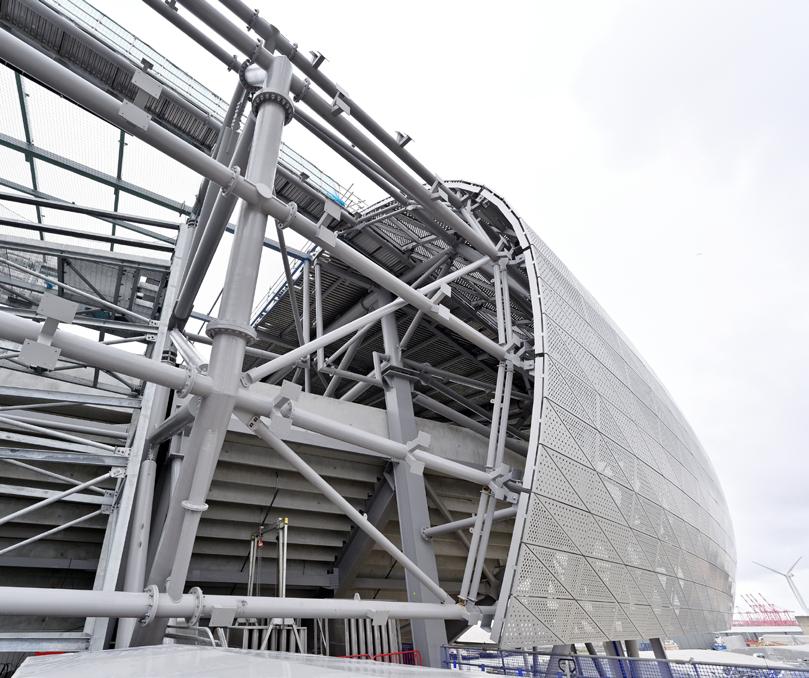
Everton Stadium: Barrel Roof Turning Vision Into Reality Company
Everton Stadium’s barrel clad roof is the stunning result of three years of meticulous planning to turn a vision into reality.
The unique, eye-catching aluminium panels have started to transform the east stand and offer a tantalising glimpse of how the 46m high structure will look when it completely transforms the north Liverpool skyline.
And for those working on the project, the installations that wrap around the curved steel skeleton perfectly capture the original design concept.
Installing the 872 panels –436 on the east and west stands – is a complex and lengthy process, with the barrel shape and malleable panels presenting several novel challenges to the installation team.
Each panel, weighing 250kg,
needs to be lifted carefully into position and angled in mid-air to be bolted onto the stadium steelwork.
This is achieved using a specially-designed robotic arm, which can be manoeuvred into any position by the crane operator.
The perforated aspect of the panels provides another clever design feature, primarily allowing more light to penetrate the fully-enclosed stadium, while also revealing elements of the architectural steelwork that provides the framework for the cladding.
And with the first phase now complete on the east stand, attention turns to starting the installations on the east stand, with the overall aim of having the stadium roof completely covered by this summer.
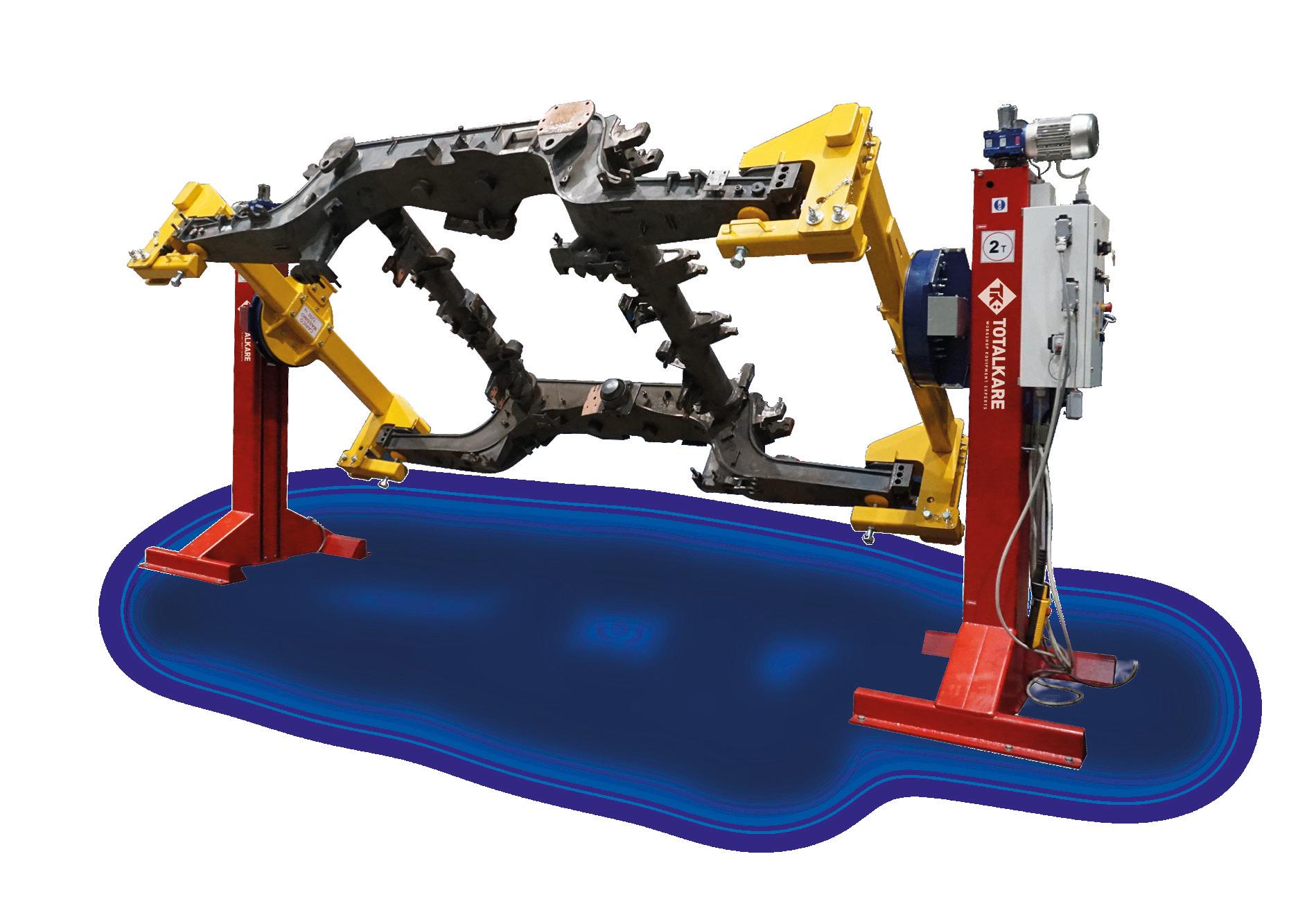

Totalkare’s ergonomic positioners are single or double column devices that enable the lifting and rotation of a product during welding and assembly operations.
With overall capacity from 2,000 - 90,000kg to suit, they are both compact and flexible.
05 Manufacturing & Production Engineering Magazine
News GET A QUOTE: T:0121 585 2724 / WWW.TOTALKARE.CO.UK
Automation

As clothing return rates increase, retailers must embrace automation to prevent losing profits says Exotec
Popularity of 2024 January sales highlights challenge of largescale clothing returns, and the need to bring items back into rotation faster than ever.
UK retailers are facing significant challenges in 2024, with the costof-living crisis and other economic challenges impacting consumers and businesses alike. To address this, many clothing retailers have run extended sales and promotions at the start of this year. This has been successful in raising sales, but it also inevitably means that companies have to deal with a higher volume of returns.
According to Statista, the most returned item in 2023 was clothing, making up 30% of returns, with shoes accounting for 15%.. In IMRG’s ‘Navigating the returns challenge’ report, fashion retailers reported that up to 45% of the items they sold are returned, with the average return rate
of 25% in 2022. Boohoo is one retailer in particular that has shared worrying figures, indicating that returns have played a part in its 92% reduction in profits, while wider industry analysis shows that UK shoppers sent back over £4.1bn of online clothing purchases in 2022, with this figure predicted to rise by 16.7% before 2027.
For retailers, the issue of reverse logistics can be a perplexing one: companies need a rapid means of processing millions of returns and getting items back into stock – both online and in-store – to prevent losses. However, according to Exotec, this headache can be reduced by embracing modern warehouse automation that is best equipped to deal with returns.
Simon Jones (right), Sales Executive at Exotec, said: “As return rates continue to rise, retailers must process returned items and get them back into their sellable stock as quickly as possible. This is even more critical for the fashion industry as seasons are very short. Fashion goes out of fashion quicker than any other product type and lines are moved quickly to “sale” status and discounted, destroying margins and revenues. Many omnichannel brands can offer free returns in store even for online purchases, which gives customers the chance to browse and potentially buy other products, while enabling in-store employees to place goods back on the shelf as soon as they’ve been checked.
“However, this is not the case for pure-play online fashion retailers, many of which sell hundreds of thousands of items between £10 and £25 at low margins. With such high return rates in fast fashion, returns are costing retailers a great deal of money
if they’re unable to get returned items checked, cleaned, and repacked rapidly before returning them to circulation for resale. It is no surprise that many are deciding to introduce fees for returns: in 2022, free retail returns cost the UK fashion industry £7 billion pounds. Even with return fees, it is a costly process and one that must be managed efficiently.”
Simon continued: “Online retailers must ensure their fulfillment operation is as productive as possible to improve profitability, and crucially, that reverse logistics is given just as much attention as the rest of the operation. Many retail warehouses are using manual picking for their ecommerce fulfilment, requiring three to five times the labour to fulfil orders compared to high performance automated robotic systems. Productivity takes a further hit when putting away and re-picking returned items in a manual warehouse. Automated systems like Exotec’s, in contrast, can speed up the process by quickly scanning returned items into a mixed SKU bin. This eliminates walking time to each stock location for each SKU or putting them in a pick-first returns area, making the process much faster and less labour-intensive. Also, when a customer next orders a specific SKU a returned unit is always presented at the pick station first.”
Simon concluded: “To improve returns processes and protect profits, online fashion retailers must give serious consideration to overhauling older, manual picking processes and automate as much as they can. This can be the difference between having to discard a returned item and being able to resell it in-store or online for full price. At a time when profit margins are being squeezed and consumers have become accustomed to returning purchases at will, the importance of slick, efficient reverse logistics cannot be overstated.”

06 Manufacturing & Production Engineering Magazine

Discover cutting-edge automation and robotics technologies at Automation UK
In less than three months’ time Automation UK will return to the CBS Arena in Coventry on 18-19 June. This renowned event is recognised for bringing industrial automation and robotics to life. The wide spectrum of features in the show ensures it delivers something for everyone. This includes showcasing the very latest innovative technologies and solutions, to providing an abundance of thoughtprovoking seminars where visitors can soak up the knowledge and be inspired to improve their own businesses. The show also provides many great networking opportunities where visitors can both develop new contacts and build on existing contacts.
According to the World Robotics 2023 report by the International Federation of Robotics, the robotics industry is predicted to continue its year-on-year growth, with a 7% increase forecasted for 2024. This provides an excellent opportunity for UK manufacturers to take advantage of the numerous business benefits that innovative automation and robotics solutions can deliver. Integrating these remarkable

technologies offer many benefits including enhanced productivity through accelerating production, increased operational flexibility, a safer work environment, an ability to manage routine tasks efficiently, an attractive return on investment, and innovative solutions to address labour shortages. When can combined, all of these benefits will deliver significant business improvements and enable the business to thrive in the future.
Automation UK provides a perfect platform for automation and robotics technologies to be demonstrated throughout the hall, giving visitors a vast array of opportunities to see for themselves what can be achieved. An impressive list of well-known companies will be showcasing their cutting-edge products and services including robots, robotics systems, systems integration, automation control parts and systems, and sensor and machine safety. The leading experts from the exhibiting companies will be eager to answer questions, provide technical guidance and recommendations on the most suitable solutions for specific needs as well as highlight the advantages their solutions can bring to businesses.
Here are some of the companies that will be exhibiting: ABB, AMP Automation, Apex Dynamics (Midlands), AP Technologies, Beckhoff Automation, Bowe Systec, British Encoder Products, Epson, Fanuc UK, Festo, Gudel Lineartec, Heidenhain, HepcoMotion, HowToRobot, IDEC

(Apem Components), Idem Safety Switches, IFM Electronic, IKO Nippon Thompson Europe, KUKA Robotics, Lamonde Automation, Mikata Technology, Mitsubishi Electric, Mobile Industrial Robots, MRK Engineering Solutions, MTA, MTC, Olsen Actuators & Drives, Olympus Technologies, Omron Electronics, Piab, RARUK Automation, Reeco Automation, Rollon, Safety Systems Technology, Schmalz, Schubert, Schunk Intec, Shibaura Machine, Simmatic Automation Specialists, SMC Corporation, Troax, Universal Robots, Vex Robotics, Wieland Electric, and Zimmer Group.
One of last year’s Automation UK visitors, Tea Chalidze, Manufacturing Excellence Manager at Marks & Spencer said: “I’m here to look at new equipment, and to see what’s on the market especially regarding robotics and automation which is our future, so attending this show and exploring and seeing new ideas is very useful.”
Throughout the two-day show, visitors will be treated to a broad range of inspiring seminar sessions delivered by the industry leading speakers. These captivating sessions will provide visitors with a wealth of knowledge and inspiration to take away and digest how it can be used to deliver benefits to their business.
In between fascinating presentations, visiting numerous interesting companies showcasing their products and services, experiencing live demos, and hearing about new product launches, there are many opportunities to meet new contacts and develop existing business relationships. These can be mutually beneficial for sharing knowledge, industry insights and problem solving. Automation UK is co-located alongside Machine Vision Conference (MVC), which is organised by the UK Industrial Vision Association (UKIVA), providing visitors to Automation UK an additional benefit of being able to visit MVC to discover the latest innovative industrial machine vision and imaging technologies, all under one roof.
For more information, please visit: www.automation-uk.co.uk
08 Manufacturing & Production Engineering Magazine
Show Preview






automationukshow automationUK_24 automation UK automationukshow
In 2024, AI will work in concert with humans to boost customer service and efficiency in retail
As has been the case with other industries, AI’s arrival in the retail sector has ignited fears that the role of human workers might soon become redundant. However, according to Laurence BrenigJones, VP of Product Strategy at RELEX Solutions, these fears are unfounded. Far from replacing in-store workers, Brenig-Jones believes, AI’s effect in retail will instead free staff up from mundane, repetitive tasks and enable them to focus on more essential and fulfilling high-value tasks while boosting their productivity as well.
“Leveraging AI to enhance staff productivity is key as labour shortages continue to be a megatrend that is changing and reshaping retail,” explained Brenig-Jones. “The shortage of labour affects retail operations across entire networks – including in-
store, transportation, and distribution centres.”
Recent research by the Retail Technology Show, an industry conference in London, found that 73 percent of shoppers believe that there will always be a role for human interaction in retail. Brenig-Jones claims that AI will transform retail in a way that reflects a growing set of technologies available and how they can address the sector’s pressing needs and opportunities.
“More retailers will use Machine Learning-based demand forecasting with probability-based optimisation algorithms to plan and streamline entire inventory flows end to end,” said Brenig-Jones. “For operational teams in distribution centres and stores, this means much more efficient workloads. For in-store staff, AI-driven alerts will direct them to tasks and areas of
attention that add the most value in terms of customer experience and sales.”
“Meeting customer expectations and demand is the perennial challenge for retailers,” he continued. “Product innovation continues to drive intense competition for market share, and product quality, particularly in fresh produce, is an important competitive differentiator. At the same time, in the current global economic climate, shoppers are more price-conscious than ever.”
“Shoppers increasingly want more sustainable alternatives when shopping, added Jones. “Successful retailers will respond by using AI to be laser-focused on how they promote and price their assortment to drive better results. They’ll use capabilities like ML and AI-based neural networks to model and optimise complex factors
Axil Achieves Record Growth: Celebrating Six Years of Innovation in Waste Management
April marks a significant milestone for the Axil team, as they celebrate six years of delivering industry-leading total waste management solutions, accompanied by an outstanding 570% surge in growth.
Axil was founded by Managing Director, Edward Pigg, in March 2018. He set out with a clear vision that industries needed more when it came
to waste management. The business now has over 150 major customers and many more sites across a client base of critical UK sectors, including Aerospace, Automotive, Food, Manufacturing, and Pharmaceutical.
Based in Corby and Cannock and operating across the UK, Axil started with just 34 people in 2018. Now, with over 200 team members, the

organisation thrives on fresh ideas and innovation, using digital tools and datadriven insights to revolutionise waste management experiences.
In this short period, Axil has achieved an astounding growth rate, translating into an impressive £34 million revenue. The organisation has expanded into new sectors, offering innovative and responsible waste management solutions. By creating a business that places clients, employees and a supportive culture at its heart, Axil has become one of the leading total waste management organisations in the UK.
From a modest start, Axil is now a leading player and currently partners with some of the most recognised UK manufacturing brands including BMW Group, Whirlpool, LEVC, Recipharm and Lush, supporting them in achieving sustainability and environmental excellence.
As Axil marks this significant milestone, it remains focused on the future. With innovation at its core, a growing community of dedicated team members, and a commitment to supporting SMEs and local employment, Axil is geared up for even greater achievements in the years to come.
Latest News 10 Manufacturing & Production Engineering Magazine
that impact demand, such as shortages, delays, and price increases.”
Jones continued, “A major pitfall in the hype around AI is rushing to use it for tasks that it simply isn’t suitable for. Retailers should leverage analytics to allow for a better understanding of performance using ultra-granular root cause analysis. For example, uncovering the true impact of inaccurate inventory data or the actual impact of poor supplier performance can ensure new AI-based initiatives maximise value. Retailers can use autonomous methods for generating this insight continuously to aid understanding and decisionmaking. The advent of generative AI in particular will prompt retailers to leverage AI technology more in 2024. Expect always-on co-pilot tools to help drive productivity across all retail staff roles, including at senior management level. Reporting and analytics will be directly available using real-time queries that tap into the vast intelligence contained within advanced AI-based platforms and these developments will significantly reshape retail operations” concluded Jones.
The company has ambitious growth goals that will see it expanding into other crucial UK sectors.
The company has ambitious growth goals that will see it expanding into other crucial UK sectors.
Click here for more about our journey, key facts about us and our aims

EngineeringUK responds to apprenticeships reforms announcement
Prime Minister Rishi Sunak is promising to create up to 20,000 more apprenticeships with a series of reforms including fully funding training for young people and cutting red tape for small businesses.
Following the announcement Beatrice Barleon, Head of Policy & Public Affairs at EngineeringUK, comments: “We welcome the Government’s commitment to offer more support for apprenticeships, particularly recognising the need to support small to medium sized enterprises (SMEs) with taking on more apprentices. We are particularly pleased to see the focus for the support is on young people aged 21 or under. Refocusing some of the apprenticeship budget money for young people is something we have called for in our recent ‘Fit
Established
for the future’ report with Lord Willetts and Lord Knight. While these measures are certainly a step in the right direction, more still needs to be done to ensure our apprenticeships system is a success. Government needs to consider the recommendations put to them as to how to better support SMEs with the processes surrounding apprenticeships and how to better help young people to be able to access the opportunities available and be ready for work. It’s clear there is still an apparent, and growing, mismatch between levy intake and the apprenticeship budget. In light of apprenticeship numbers needing to grow to meet demand in the engineering and technology sector, we would like to see greater transparency as to how this additional money is currently being spent.”
knowledge drives success in challenging cleaning environments
Leading food and beverage manufacturers are facing increasing pressure to eliminate the risks of product contamination. With stricter hygienic controls required, the key to success is the rigorous and effective cleaning of the process line itself. CleanIn-Place (CIP) systems are universally recognised as the most effective solution for maintaining dependable, consistently repeatable results.
Responding to demand for a more versatile approach, Axium Process have launched an adaptive Mobile CIP System for all industry sectors, offering a cost-effective and compact plug-and-play solution in place of traditional fixed-in-place methods.
The new CIP package is a highly versatile and easy-tomaintain clean-in-place solution, designed with mobility and hygiene at the forefront of its design.
Fully customisable with options ranging from manual to automatic, the system can be adapted to include an integrated control unit via a panel-mounted touchscreen HMI and PLC. With remote monitoring and ongoing technical support available if required, the system can be programmed to record historic data, accessible on site by an operator, or remotely by one of Axium’s own engineers. Developed with decades of hands-on experience across multiple process applications, Axium’s new Mobile CIP System offers an advanced alternative for sanitary maintenance.


11 Manufacturing & Production Engineering Magazine
Latest News
Controls & Automation
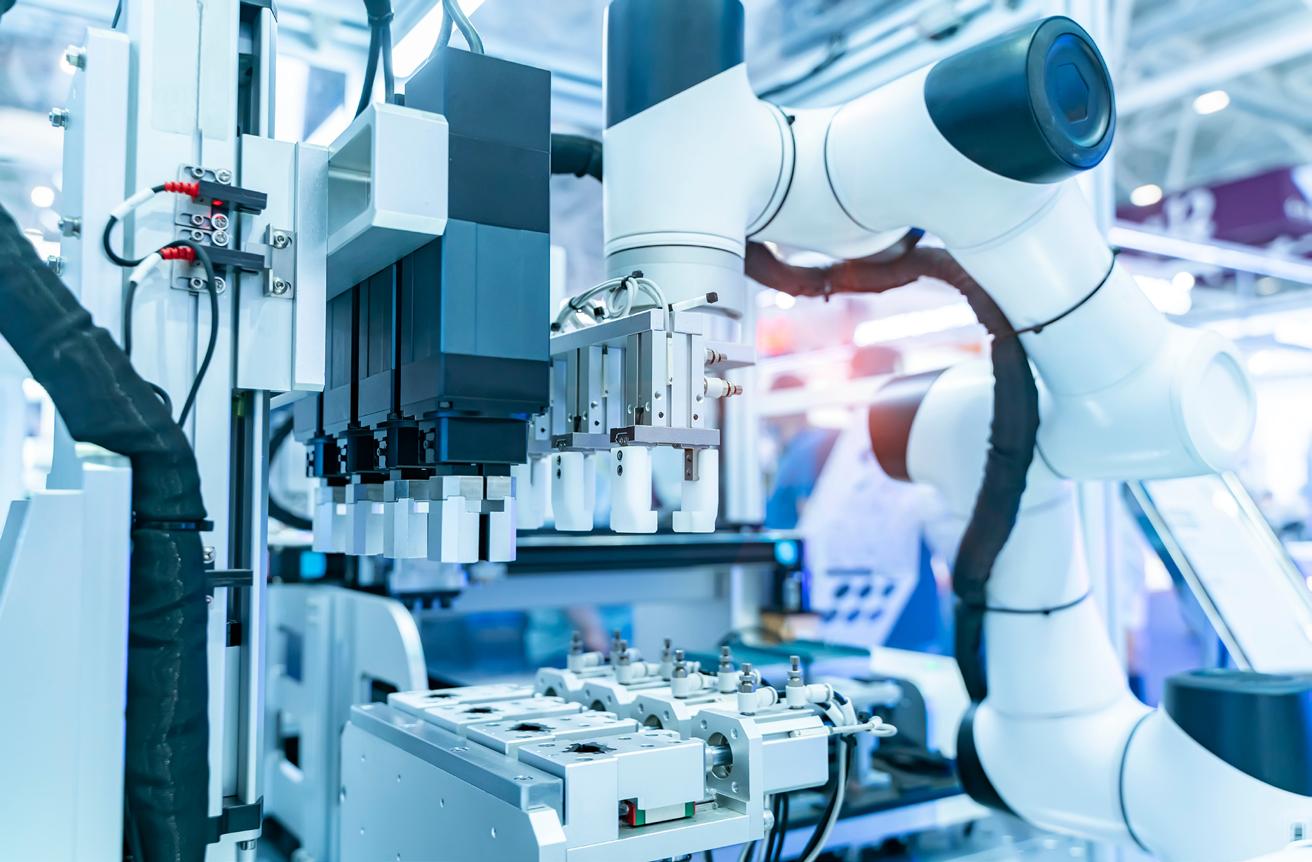
Lab Automation: How is Advanced Tech Meeting the Needs of Modern Labs?
As you read this, scientists are working to find solutions to our world’s greatest challenges, like climate change, healthcare and global hunger. But in their pursuit of research and development victories, scientists must also face many complexities…
Increasingly stringent compliance regulations. Tightened budgets. Staff shortages. Scientific instruments maintenance. Juggling these challenges outside of their research takes time and expertise — resources that are hard to expend in the fastpaced world of science.
That is where laboratory automation comes in.
Through advanced technologies like robotics, sensors and computers, lab automation encompasses the integration of artificial intelligence (AI), machine learning (ML) and data analytics to increase productivity, streamline workflows and reduce human error.
So, what can these advanced technologies offer to meet the demands of modern labs — and how are they being used today
The (many) benefits of lab automation
Despite the ever-changing demands of scientific research and development, lab automation provides consistent advantages.
Expanded lab capabilities
Utilising automated software
and robots expands the capabilities of laboratories, giving researchers increased capacity to complete complex tasks that require human insights and offering assistance on repetitive tasks.
Guaranteed reproducibility
Automation tools have the potential to reduce human error, variability and substance contamination — resulting in better quality and more accurate results.
For example, laboratory automation can enable a greater rate of experimental data capture, increased volume of results and the use of a broader range of controls, which helps to increase the chances of results being reproducible. This reliable data can then be built upon with further research.
Improved data accuracy
Automation tools use AI and ML algorithms to learn from a large pool of real data samples. By utilising these tools, researchers can improve the accuracy of data evaluation compared to human-based interpretations.
Plus, since data logging is timeintensive and mundane, it can be easy for lab workers to make mistakes. Automating this process helps guarantee up-to-date, accurate data that is available to investigate in realtime.
Most importantly for scientists, accurate data is essential for traceability and compliance purposes.
Safer working conditions
As many lab processes are hazardous and involve exposure to dangerous liquids and chemicals, automating the handling of these substances can create a safer work environment.
Introducing automation can even help modern researchers become more eco-conscious since their experiments will consequently use up less energy and create less waste. Key lab automation technologies
Whilst automated systems can get quite expensive, many labs are taking advantage of more budget-friendly options that do not require fully automated workstations to get the job done…
For instance, incubators are among the most common types of automated scientific instrumentation. This equipment requires reliable electronics that create a controlled and contaminant-free environment for the growth of cell and tissue cultures. The incubator’s microcontroller processes data from precise temperature and humidity sensors to automate and control the conditions of the incubator. When the microcontroller notices a change in these conditions, it can activate the fan or lamp.
Another widespread use of automation in the lab is highthroughput screening. In drug discovery and development, researchers are tasked with testing thousands of compounds to identify potential drug candidates. Lab automation, such as liquid handling robots and plate readers, can speed up the process by quickly and accurately screening large numbers of compounds.
Sample preparation and tracking is another time-consuming and errorprone job. Luckily, automated sample preparation systems can increase productivity and accuracy. Lab workers may also utilise automated systems incorporating barcoding and scanning technologies, which allow them to track samples throughout the lab workflow and ensure accurate identification, sample routing, and traceability.

12 Manufacturing & Production Engineering Magazine

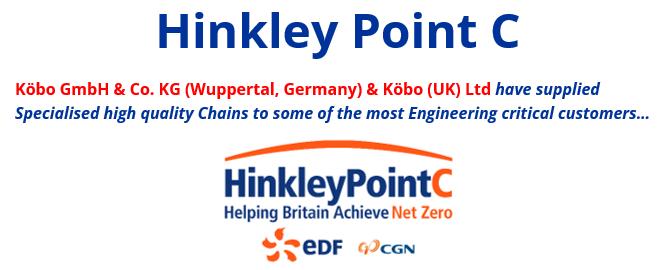


13 Manufacturing & Production Engineering Magazine Controls & Automation K K ö b o ( U K ) L t d : Tel: 0161 491 9840 // email: info@kobo.co.uk // Web: www.kobo.co.uk
Compressed Air, Pumps & Valves
Digital Compressed Air Monitoring “cuts costs by up to 30 percent”
SICK has unveiled a pioneering compressed air monitoring system that accurately predicts where significant energy costsavings can be made by fixing air leaks and removing wastage across entire production and logistics facilities.
SICK’s Monitoring Box FTMg Premium is a digital and scalable service that can be used by production planners, energy managers and maintenance engineers to make compressed air cost savings of up to 30%, as well as to eliminate costly manual maintenance regimes.
The enhanced digital Monitoring Box Premium service analyses and displays accurate data from SICK’s FTMg multifunctional flow sensors that measure the compressed air usage of machines and processes. Compressed air consumption data is visualised in easy-to-use graphic displays, while alarms can be set up to alert when new leaks occur.
By interpreting the data, leaks and inefficiencies are easily eliminated, users understand their processes better and can make around-the-clock decisions to optimise their energy usage. They can make their production processes more sustainable, for example by reducing their CO2 consumption. The data insights also contribute towards ISO50001 Energy Management certification.
Expensive Resource
Compressed air is one of the most expensive resources used in production, and energy prices have risen sharply. Identifying and correcting leaks is a time-consuming and labour-intensive process of routine checks that can still only ever identify leaks at one fixed point in time. Charlie Walker, Digital Solutions Consultant with SICK UK, explains:
“Even if you walk around the factory today and identify and fix all your leaks, tomorrow there might be three more you will not have found. Now you can drill down using precise real-time data to discover exactly when, and where, you are producing air and wasting it.
“The system will tell you how much wastage is going on, and what that’s worth in real money. So, you know when to take action.
“Ultimately compressed-air costs could be reduced by up to 30% delivering a significant Return on Investment, while reducing your CO2 footprint and making servicing both more efficient and effective.”
Enhanced Digital Service
Already, the Monitoring Box FTMg Premium is being used successfully by SICK customers who have welcomed the easy-to-use data visualisation and scalability of the system. They have been able to set up specific alarms to indicate leaks or inefficient machine consumption. By comparing compressed air data from each measuring point, machine, and production line, cost drivers or overconsumption have been identified, for example, by comparing a machine type with the same function on two production lines. Compressed air efficiency comparisons can similarly be made across plants.
The SICK FTMg which stands for Flow Thermal Meter for inert gases, uses the dynamic calorimetric principle for precision measurement, enabling it to detect even the smallest changes reliably. Its straight measurement channel design ensures
highly-accurate measurement with almost zero pressure loss as gases flow through the sensor during measurement.
The SICK FTMg enables measurement of live values for compressed air energy in kWh. Data from the FTMg flow meter is presented via the SICK FTMg Monitoring App, which has been developed from SICK’s proven Industry 4.0 Monitoring Box condition monitoring platform. As well as values for pressure, temperature, flow velocity, mass flow rate and volumetric flow rate in real time, the sensor provides totals for energy use, volume and mass over a pre-defined period.
The user-friendly dashboard makes it easy to interpret data to detect leaks or overconsumption and to look for changes and trends. Email alerts can be set up for maintenance reminders or to give pre-defined warnings with job recommendations, for example when data strays beyond pre-defined limits. Users can drill down to identify costs, for example for individual production centres or by shift.
‘Bolt-on’ Transparency
Up to eight FTMg flow meters can be configured via each SICK Smart Services Gateway, which collects data, aggregates and encrypts it before sending it securely via the customer’s own IT infrastructure through a firewall to the SICK cloud. Alternatively, it is possible to by-pass the IT infrastructure by using mobile communications over 4G. Individuals then have access through a personal SICK ID from any device with a web browser.
Website: www.sick.com

14 Manufacturing & Production Engineering Magazine



Saving energy and space at the same time, that doesn’t have to be a contradiction. Quite the opposite. At ALMiG, we have been proving for many years that the concept of a vertical arrangement of motor and compressor unit is the key to success - to efficiency. Energysaving speed control through an oil-cooled permanent magnet motor, a highly efficient compressor stage combined with the most intelligent control technology and the lowest noise level are our answer to the increasingly demanding requirements of the future.
o Extremely energy-efficient due to direct drive and speed control
o Smallest footprint due to vertical arrangement of the motor-compressor unit
o Easy accessibility and maintenance
o Motor efficiency corresponds to IE4 or better
o Heat recovery optionally available incl. utilisation of waste heat from the motor!
o Air Control P as standard compressor control





Air Power Products Ltd Unit 1,2,and 8 Abbey Way │ North Anston Trading Estate │ Dinnington Sheffield │ S25 4JL UK │ 01909 519 519 │ airpowerproducts.co.uk SPECIALISTS IN COMPRESSED AIR WE CAN SERVICE AND REPAIR THE FOLLOWING COMPRESSOR INSTALLATION COMPRESSOR SERVICING PIPEWORK INSTALLATION
for
new compressor ?
SPACE
ENERGY Call us today on: 01909 519 519 PART OF THE
Looking
a
Talk to us today about how the Almig Series F-Drive compressors can save you
and
Compressed Air, Pumps & Valves
Elta Introduces ‘Prefabricated Solutions’ Service Amidst Surging Demand for Offsite Manufacturing & Modern Construction Methods
With the continued rise of offsite construction, and the prefabricated building systems market booming, Elta is proud to offer its innovative ‘Prefabricated Solutions’ service, catering to a wide range of fan applications, including smoke fans. The solution is set to help cut installation costs and speed up building projects with greater efficiency and compliance while enhancing site safety.
Modern Methods of Construction and offsite initiatives are growing exponentially across the UK. To highlight this, last year, the Crown Commercial Services selected 29 firms to be part of the £10bn Offsite Construction Solutions framework, with public sector buildings across healthcare, education, justice and defence all expected to swing toward modular construction.
Elta’s Prefabricated Solutions service is ideal for specifiers and contractors working on commercial building projects of any scale. Fans and ancillaries, such as acoustic equipment, mounts, panels, flexible connections, fan controls and more, can all be assembled offsite and delivered as a compliant assembly. These are then ready for crane lifting, resulting in quick, efficient installation. The ventilation and air movement manufacturer is one of the first in its sector to offer this kind of solution across multiple fan types and ranges.
Colin Moss, Car Park and Spoke Control Manager at Elta, has pioneered the
Installing individual components onsite can be a cumbersome and time sensitive task
service and elaborates on the multiple benefits specifiers and contractors can gain by going down the prefabricated assembly route. He said: “Installing individual components on-site can be a cumbersome and time sensitive task. It requires ample storage and working space, leading to congestion on busy sites and increasing the potential for site safety issues. The collection and assembly of various parts can also be time-consuming, causing delays to projects.
“Not only this, but site time is costly, and labour costs can quickly add up when dealing with unnecessarily complex, site installations. With Prefabricated Solutions by Elta, these challenges are a thing of the past, and you can manage these expenses and have better quality control of the finished product.”
A key benefit of the new service from Elta is the provision of both acoustic and air flow performance data when engineering a solution. Using Elta’s selection software, the acoustic performance data can be supplied at the initial stages to help simplify the process for specifiers and contractors.

This means an engineered acoustic solution can be developed from the start, and there is no need to re-select or re-calculate separately were they sourcing these components from elsewhere.
Elta’s Prefabricated Solutions service means units are built to the highest standards within a controlled factory environment. The company, which has UK-manufacturing sites in Kingswinford, Fareham, and Colchester, is certified to ISO 9001, meaning even units built to bespoke specification will still be accredited and, importantly, all smoke fans are certified with the ancillaries and mounting base.
Luke Hammond, Applications Specialist at Elta, explains that prefabricated assembly of fans also unlocks a host of other benefits. These include a more streamlined design process, offering simpler compliance with both ‘The Golden Thread’ and environmental requirements while reducing disruption to the local community, and other related site activities.
“Gone are the days of waiting for single components to be delivered to the site, which can get lost or damaged while other elements of the project are in transit. With our Prefabricated Solutions service, all necessary components are packaged together, ensuring a hasslefree delivery,” said Luke.
“Preassembled units also mean other costly, disruptive activities on-site, such as crane lifting and road closures, can be minimised. Shipping materials like pallets, packaging and strapping is all reduced as well, and with better overall coordination, Prefabricated Solutions allows workforces to focus on boosting productivity in other areas.”

For more about Elta and its Prefabricated Solutions service, visit https://eltauk. com/prefabricated-solutions/
16 Manufacturing & Production Engineering Magazine

One delivery. PREFABRICATED SOLUTIONS eltauk.com
One order. One frame.
Scan the QR Code to find out more.
Discover how our Prefabricated Solutions for fans and accessories can help you to boost on-site productivity, along with enhancing efficiencies and streamlining your processes. Off-site assembly not only reduces waiting times but saves on cost and eliminates installation problems. The all in one ventilation solution.
Asset Finance – your next option for funding
Asset finance is an alternative form of funding used by businesses to obtain the equipment they need to grow or access much-needed cash. Asset finance makes the otherwise unaffordable affordable because it gives businesses access to the equipment without incurring the cash flow disadvantage of an outright purchase.
Agreements can also be customised to the business’s needs, with flexibility on both the term and repayment schedule.
In this article we take a close look at three key products:
• Finance Lease
• Refinance
• Hire Purchase
Finance Lease
Think of Finance Lease as a longterm rental for business assets (or equipment, which is the same thing). Instead of buying the asset upfront, you pay rent to use it, with a flexible rental period to match your needs and cash flow fluctuations, which we know can change month-to-month. You cover the cost of the payments, including the agreed interest, for the duration of the rental period.
At the end of the initial lease, you have various options available to you:
1. Keep on using: Continue leasing the asset by extending the rental period – otherwise known as a ‘secondary rental period’
2. Sell and earn: You can sell the equipment and keep a share of what the asset is sold for
3. Return: Give the equipment back to us if you no longer need it or want to upgrade to something newer
Who is Finance Lease for?
Finance lease is for businesses that need equipment but prefer not to purchase it outright. It’s suitable for companies looking to use assets like machinery, vehicles, or technology without a large upfront cost. Whether you’re a small construction firm needing a forklift or a larger operation needing specialist equipment, finance lease offers flexibility by allowing you to pay for the equipment over time while having the option to keep, sell, or return it at the end of the lease term.
Refinance
Refinancing uses the value of assets you already own to help your business. With Sale and HP Back – a type of refinancing – you sell your equipment to us, and we lend you the money you need to invest in your business. You pay us back in line with what the equipment earns for you.

Asset finance is an alternative form of funding used by businesses to obtain the equipment they need to grow or access much-needed cash.
Once you’re done paying us back, you own the equipment again. This works whether you own the equipment outright or are already financing it with someone else.
Who is Refinancing for?
Refinancing is for anyone looking to unlock the value of their existing assets to support their business. Whether you own equipment outright or are financing it elsewhere, refinancing can provide a quick way to access funds for things like new equipment, improving cash flow, or other business needs. It’s a flexible option suitable for businesses of all sizes, including sole traders.
Hire Purchase
Hire Purchase is the smart way to get what you need because:
• You get to choose, use and manage the assets you need for your business over an agreed period, typically up to five years
• The regular instalments you pay as part of your agreement will cover:
• The asset’s depreciation
• Interest on the cost of the asset
• At the end of the term, you get to choose to buy the asset and own it outright
Who is Hire Purchase for?
Hire Purchase is especially handy for:
• Businesses who want to keep control of their cash flow by knowing what their investments are going to cost them over the long-term, allowing them to budget effectively
• Purchasing ‘hard’ assets like vehicles, machinery, equipment and other assets with resale value
For more information, please visit: closeassetfinance.co.uk/mpe
18 Manufacturing & Production Engineering Magazine
Asset Finance
Very simply, it allows businesses of all sizes to get the equipment, vehicles and machinery they need. All without having to pay the full price upfront. What is Asset Finance? We understand the industries we work with and we offer a choice of finance options that best suit your needs. closeassetfinance.co.uk/mpe Contact us today Products and services are subject to eligibility, status, terms and conditions and availability. All lending is subject to status and our lending criteria. The right to decline any application is reserved. Close Brothers Asset Finance is a trading style of Close Brothers Limited. Close Brothers Limited is registered in England and Wales (Company Number 00195626) and its registered office is 10 Crown Place, London, EC2A 4FT.
Interview: Rosa Wells Interview
Manufacturing & Production Engineering Magazine speaks with an engineering professional turned FE teacher, Rosa Wells.
Firstly, could you tell us more about the start of your engineering career and your experience within the engineering sector?
As a child, I was inspired by the story of Amelia Earhart and her adventures with flight. When I was about 10, I decided I wanted to become a pilot to find out how planes worked. A family member who was an engineer said: ‘Well, pilots don’t know how they work but engineers do.’ So that was it. Engineering it was. This led me to my determination to study engineering and get to grips with theories of aeronautics.
I joined Engineering Manufacturing straight from school at 18 and was then sponsored through my degree level studies and was involved in implementing Quality Management Processes at work through this time. I also spent some time in France supporting with Engineering research. The real-world expertise I have gained during this time has informed my approach to teaching in further education (FE) and enables me to pass on my knowledge and inspire future talent through sharing my own experiences.

What inspired you to transition into the Further Education sector?
Having worked in both the engineering and manufacturing sector for 6 years, I felt it was time for another challenge. I really missed interacting with people and wanted a role where I could share

my existing knowledge and skills. A friend suggested I look at teaching in further education. At first, I thought I wouldn’t be qualified as I didn’t have a teaching degree, but the local college I applied to reassured me it was my experience from industry that was important. My skills were more valuable than I realised, and I was able to start right away and do my teacher training on the job.
I remember going out for dinner with friends a few years after I started teaching in FE, and they all said they wished they had a job they loved as

20 Manufacturing & Production Engineering Magazine
much as I loved mine. I feel so lucky to have found such a rewarding career.
Have you experienced any barriers entering the industry?
I started out my career working in the manufacturing industry which was heavily male dominated and when I went on to degree level study, there were only a handful of girls on my course. However, at that point in time, I was very well supported by more senior female colleagues within my workplace. They provided advice and guidance and encouraged me to be confident in predominantly male teams. I would like to think that my current work in FE teaching provides the same support to other female students as I was once lucky to receive.
Can you talk about the valuable training opportunities you offer to students?
I am passionate about supporting a better gender balance within the industry. As a further education teacher, I have the opportunity to engage with female learners who might be considering a career in engineering and work with them towards their goals. Alongside my teaching role, working in FE has also opened opportunities to work with organisations such as Women into Science and Engineering (WISE) to develop projects which seek to raise awareness of engineering careers choices.
In your opinion how does Further Education engineering opportunities benefit students?
It is essential that our students can benefit and learn from the industry experience of their teachers to understand how engineering is applied in real cases. I was trained as a Manufacturing Engineer including being given a key role in several continuous improvement projects. This informs my approach to teaching – key concepts such as continuous improvement, preventative maintenance and agile engineering underpin the way engineers work most effectively so I ensure that I teach these skills.
I would highly encourage other industry professionals to consider teaching part-time in FE. This is an excellent opportunity to train the next

pipeline of talent in your industry without changing your career. Lessons don’t just take place in the classroom. You can do workshops, teach on-site or anywhere that allows learners to get hands-on experience in the field they are thinking of moving into.
What is your proudest achievement within the industry?
Knowing you’re changing learners’ lives, getting to know them, hearing about the challenges they have faced and what they want to achieve, has been brilliant.
It was particularly inspiring to support our Engineering learners who
used their skills to make valuable contributions to supporting the NHS during the Covid pandemic. We had apprentices involved in designing and manufacturing ventilators, installing lighting for the Nightingale hospitals, and working on building maintenance within NHS Hospitals.
What would your advice be to young women wanting to enter the industry?
If you are a young woman considering entering the Engineering and manufacturing industry, I would highly encourage you to go for it. The engineering landscape evolves rapidly, so you will never get bored on the job! Stay open-minded and committed to continuous learning. Connect with other women in engineering, learn from their experience and celebrate each other’s successes.
But most importantly, believe in yourself. Engineering can be challenging, but it is an opportunity to grow. Who knows, maybe down the line you will also decide to become a further education teacher to pass on your love for engineering to other curious minds.
To find out more about how you could share your existing industry skills by teaching further education and the next steps to take, visit gov.uk/ teach-in-further-education

21 Manufacturing & Production Engineering Magazine
Interview
Health & Safety
Utilising NonTechnical Skills (NTS) to help improve safety in organisations
Dr Stephen Fletcher, Occupational Psychologist and Director at the Occupational Psychology Centre (OPC), highlights the transformative impact of NTS on safety performance.
Non-Technical Skills (NTS) are fundamental personal attributes essential when undertaking safetycritical roles with precision and efficiency. They encompass an array of cognitive, social, and motivational skills essential to help improve the safety performance of such roles. From the mental ability to concentrate and social skills like communication to showing conscientiousness or a strong motivation to follow rules, NTS are foundational individual capabilities.
Dr Fletcher said “As a team of occupational and business psychologists we’re fascinated by NTS because of their intimate connection to human behaviour and their profound influence on ensuring safety. We’ve witnessed first-hand the personal and organisational impact they can have on safety performance.”
NTS and technical skills
Distinguishing NTS from Technical Skills (TS) is important. “While technical skills can be learned and acquired, NTS are more an individual’s enduring characteristics. They are the inputs that enable us to deliver a job’s technical skills in a safer and more effective manner. For example, a machinist may draw on the NTS of checking, completing pre-start checks for hazards, blocks or maintenance as a meticulous routine before starting work.”
“Through our client work, we’ve discovered that NTS are an essential bedrock on which technical proficiency stand. An employee who lacks the NTS of ‘Retaining Knowledge’ is less likely to successfully manage unexpected challenges or technical faults, therefore impacting downtime. Likewise, a fork-lift driver without the NTS of ‘Concentration’ may not operate their vehicle safety or fail to identify hazards promptly.

“Based on our experience if you want to train an employee to undertake safety critical duties well, then they really need the prerequisite NTS.”
Integrating NTS into the employee lifecycle
NTS play a crucial role in workplace safety, influencing employees, and their colleagues. To maximise their benefits, it’s important to integrate them into the employee life-cycle. This is about using them in recruitment, training, development, competence assessment and incident management.
The benefits of NTS
“In the dynamic landscape of manufacturing and engineering, safety is paramount. NTS such as conscientiousness, risk awareness and rules adherence can be indispensable safeguards against safety incidents and accidents, shielding employees while maintaining operations and protecting valuable assets.” remarked Dr Fletcher. He continued, emphasising their multifaceted role: “NTS not only play a crucial role at preventing safety incidents but also in deciphering the root cause(s) of poor safety performance. We believe there are some key NTS crucial for safe and effective safetycritical role performance. Utilising them helps to ‘smart target’ areas for safety improvements, which can sometimes be a daunting task.”
How can the OPC help?
The OPC provides tailored NTS training programmes helping employees to harness the power of NTS and develop a culture of vigilance and NTS application throughout the organisation. Additionally, they offer NTS manager training for team development and post-incident investigations. OPC psychologists also conduct individual Post-Incident
Assessments (PIA) to uncover the human factors behind a safety incident.
Effective recruitment tools to help assess for key safety-critical NTS
The OPC undertake role profiling to identify the key NTS required for each safety-critical job. OPC Assessment also offers a wide range of innovative and practical assessment tools to help identify and evaluate key NTS for existing employees or potential candidates. Some examples include: The Risk and Time Focus Questionnaire (RTQ). The Safe Concentration and Attention Test (SCAAT), a world leading tool for assessing concentration and the Trainability for Safety Test (TRFS)
Dr Fletcher concluded: “Strategically adopting NTS across an organisation can significantly help boost safety performance. In today’s safety-focused landscape, prioritising NTS alongside technical skills can assist in improving overall competency and help to enhance organisational safety culture.”
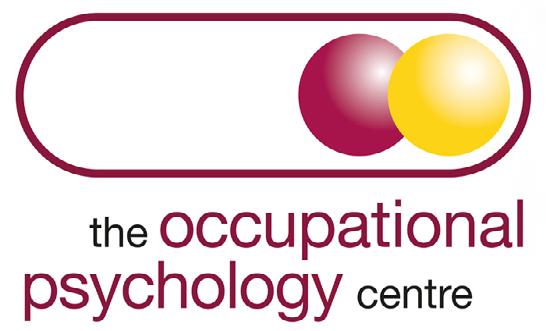
Curious about Non-Technical Skills? Get in touch with the friendly OPC team to see how NTS could help transform your safety performance journey.
E: admin@theopc.co.uk
T: +44 (0)1923 234646 W: www.theopc.co.uk
22 Manufacturing & Production Engineering Magazine

Discover potential. Drive performance.

With over 30 years’ experience working in the rail industry, specialising in the safety sector, the OPC provides practical, reliable ways of improving performance and assessing ability.
Tackling the threat of Fluid Injection Injuries

The British Fluid Power Association (BFPA) promotes the highest working standards in fluid power through training and education and aims to support fluid injury accident management with its essential booklet Fluid Injection Injury Booklet “THE FACTS”.
BFPA’s Fluid Injection Injury – The Facts Booklet
This handy top-pocket sized booklet is available from the BFPA, covering the background, symptoms and treatment of fluid injection injuries –identifying people who are most at risk and how such an injury should be treated. Every booklet now comes with a wallet sized plastic card detailing the emergency action steps to take immediately after an injury.
Fluid Injection Injuries have been known to occur at pressures as low as 6.9 bar (100 psi) which means the people most at risk are not just limited to those who work within the mobile replacement hose business, but anyone who works with equipment under pressure which uses oil (hydraulic) or air (pneumatic) as the medium, or even bystanders in the wrong place at the wrong time.
The Fluid Injection Injury Emergency Fact Book covers the following:
ACCIDENT MANAGEMENT
• How to Treat a Fluid Injection Injury
• Treatment and timeline
• Guidelines for optimal treatment (for the medical professional)
• Site of Injection
• Injection Injury Patient Information Sheet
• What to look out for: Step by step progression of high-pressure injections
RISK MANAGEMENT STRATEGIES
• Abstract
• The People Most at Risk
• Material injected
• Identifying the symptoms
• Outcomes
To order your copy of the BFPA Fluid injection Injury booklet, visit the BFPA’s website www.bfpa.co.uk/ publications or call us on 01608 647900
FOUNDATION SAFETY COURSE
This course has been developed to provide an introduction into hose, connectors and the safe assembly of these components for industry use. During the day the attendee will gain a knowledge and understanding of safe hose assembly and if applied will only enhance the safety within the hydraulic industry and the attendee.
HOSE ASSEMBLY SKILLS COURSE
The skills course will take the candidate through the many techniques and considerations essential for the safe production of a quality hose assembly and ultimately leading to installation. This two day course involves both the theoretical and practical elements in working with hose and connectors.
INDUSTRY RECOGNISED COURSES FROM THE BFPA NOT
KNOWING IS NOT AN OPTION
The BFPA have for many years been passionate about raising standards within the fluid power market and industry as a whole, with this objective in mind we have created a suite of valuable training courses now available.
SMALL BORE TUBING
INTEGRITY COURSE
Delegates are offered a valuable understanding of the complexity surrounding small bore tubing and compression fittings. The course covers generic manufacturers twin ferrule compression fittings, thread awareness, tube and pipe differences and the preparation process, tube manipulation (bending) principles, common installation and routing techniques.
HOSE INTEGRITY, INSPECTION & MANAGEMENT
The key themes covered during the one-day course include: hose life expectancy; risk analysis; competence by way of a robust competence assurance system; identify, inspect & record; hose register –recording of a hose assembly prior to it going into service; and visual hose assembly (installation) inspection check list.
HYDROSTATIC PROOF PRESSURE TESTING
The course will help give the delegate a greater understanding of the dangers associated with pressure testing. During the one day course the delegate will learn how to safely test hose and connector assemblies by taking into account a safe system of work best practice procedure (HSE GS4 document) along with relevant pressure test standards commonly used within industry.


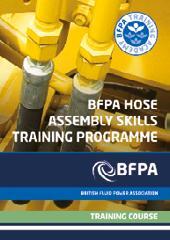







Health & Safety 24 Manufacturing & Production Engineering Magazine
Courses can be delivered face to face or online for more information or to check availability please visit: www.bfpa.co.uk/training Please call 01608 647900 or email enquiries@bfpa.co.uk 17923 TA_Half_Page_Ads_AW.qxp_Layout 1 04/01/2021 13:25 Page 1
W C O S T
ENERGY EFFICIENT COOLING

Babcock Wanson Group joins the United Nations Global Compact
The Babcock Wanson Group, of which industrial process heating equipment and solutions specialist Babcock Wanson UK is a founding company, has joined the United Nations Global Compact, the largest international initiative for sustainable development and corporate social responsibility (CSR).
EcoCooling Evaporative Cooling
– Effective, energy efficient cooling for large spaces with no refrigerants
Cool 250sqm for the same cost as boiling a kettle
The ideal solution for cooling production and warehouse facilities, energy efficient evaporative cooling can be used to blanket cool large spaces or spot cool problem areas or mezzanine floors. Air supply temperatures off the coolers do not exceed 25C, without the need to utilise any refrigerant technology.
UK based with established installation network

At the heart of Global Compact is 17 Sustainable Development Goals, which aim to respond to the most pressing social and environmental challenges of our time by 2030. By joining Global Compact, Babcock Wanson has committed to respecting these principles and contributing to their achievement. Cyril Fournier-Montgieux, Babcock Wanson Group CEO states: “This network will provide us with a framework for exchange and learning, as well as tools and resources to strengthen our CSR performance and report on our progress.”
Thousands of EcoCoolers are installed in facilities across the UK, they are the go-to provider for evaporative cooling for industrial cooling applications. The installation network provides free site visits and quotes for supply and install. All spares and coolers are held in our Suffolk warehouse, ensuring rapid supply and maintenance.

Website: www.ecocooling.co.uk
Email: sales@ecocooling.co.uk
Phone +44 (0)1284 810586
25 Manufacturing & Production Engineering Magazine Health & Safety
For
Babcock
more information, please contact
Wanson on 020 8953 7111 or info@babcock-wanson.com or go to www.babcock-wanson.com
Book your site visit. www.ecocooling.co.uk sales@ecocooling.co.uk +44 (0)1284
NO REFRIGERANTS SAVE UP TO 90% COMPARED TO AC EVAPORATIVE AND FREE COOLING ✓ ✓ ✓ L
810586
O

Dean Group Announces Leadership Transition
We are excited to reveal an important strategic shift as part of our leadership succession plan. Effective July 2024, Pulkit Ahuja will take up the role of Managing Director, succeeding the retiring Graham Stubbs.
Pulkit, a key member of the Dean Group team since 2019, has been selected for his proven proficiency in directing the company’s commercial operations, contributing significantly to its enhanced positioning within the casting industry. Outgoing Managing Director Graham Stubbs, who expertly navigated the company through the global pandemic, has applauded the appointment of Pulkit Ahuja.
Reflecting on the leadership transition and expressing confidence in his successor, Graham Stubbs stated, “As I transition from my role, it gives me great comfort to know that Pulkit will be steering the ship. I have faith in his capabilities and believe the future of Dean Group is in excellent hands.”
As of the 2nd January 2024, Pulkit has taken on the responsibilities of the Managing Director designate, with the official transition planned for the 1st July 2024.
ACE Welcomes Infrastructure Policy Leader, Kate Jennings as New CEO
The Board of the Association for Consultancy and Engineering Group (ACE) has appointed Kate Jennings as its new Chief Executive, strengthening the association’s position as a leading voice for UK consultants and engineers in the Built Environment.
Ideally placed, Jenning’s extensive infrastructure career includes serving in the Cabinet Office and the Department for Transport leading on EU and international transport policy, followed by a strategic leadership role at the Railway Industry Association and her most recent post as an Executive Board member at Logistics UK where she established a strong policy team and strategy for success.
Sarah Prichard, Chair of ACE Group said, “Kate is joining ACE at an exciting
time, we are celebrating our 110th anniversary with a strong plan, with robust governance and a talented team to take us into 2025.
“She will support the outstanding contributions to infrastructure our members are making and continue to foster collaboration with the next government to move the UK forward to a low carbon future.”
On her appointment Kate Jennings said, “Nations around the world are prioritising infrastructure in the race to deliver net zero and green growth. The UK stands at a pivotal juncture, but there is a serious risk of falling behind. With a general election fast approaching and many ongoing industry challenges, I am delighted to be leading the ACE Group during this critical period for our members.
“Our objective is to ensure that every political voice understands the role our sector plays in contributing solutions that support sustainable growth and prosperity.
“Engaging with stakeholders, government representatives, and our membership is paramount. Our members serve as partners for government, and the collective expertise of our industry uniquely positions us to translate political aspirations into reality through a solutions-based approach.
“I look forward to the discussions ahead, strengthening new and existing partnerships, and delivering our impactful annual plan to drive our industry forward and contribute significantly to the UK’s economic prosperity.”
People On The Move 26 Manufacturing & Production Engineering Magazine
My mission will be to assert our position as the ultimate choice for casting solutions catering to highdemand markets.
- Pulkit Ahuja - Managing Director
Until then, Graham Stubbs will remain involved with strategic undertakings and continue to offer his valuable guidance up until the summer of 2024.
Sharing his thoughts on his new role, Pulkit Ahuja said, “I’m deeply honoured and excited to accept the role of Managing Director at Dean Group. My mission will be to assert our position as the ultimate choice for casting solutions catering to high-demand markets. The path ahead may present challenges, but I have the utmost faith in our team’s capacity to surmount any obstacle. Together, we’ll shape a prospering future for Dean Group.”
This planned succession reflects the company’s commitment to a seamless transition in leadership that ensures continuity and maintains the high standards for which Dean Group is recognised in the industry.

People On The Move
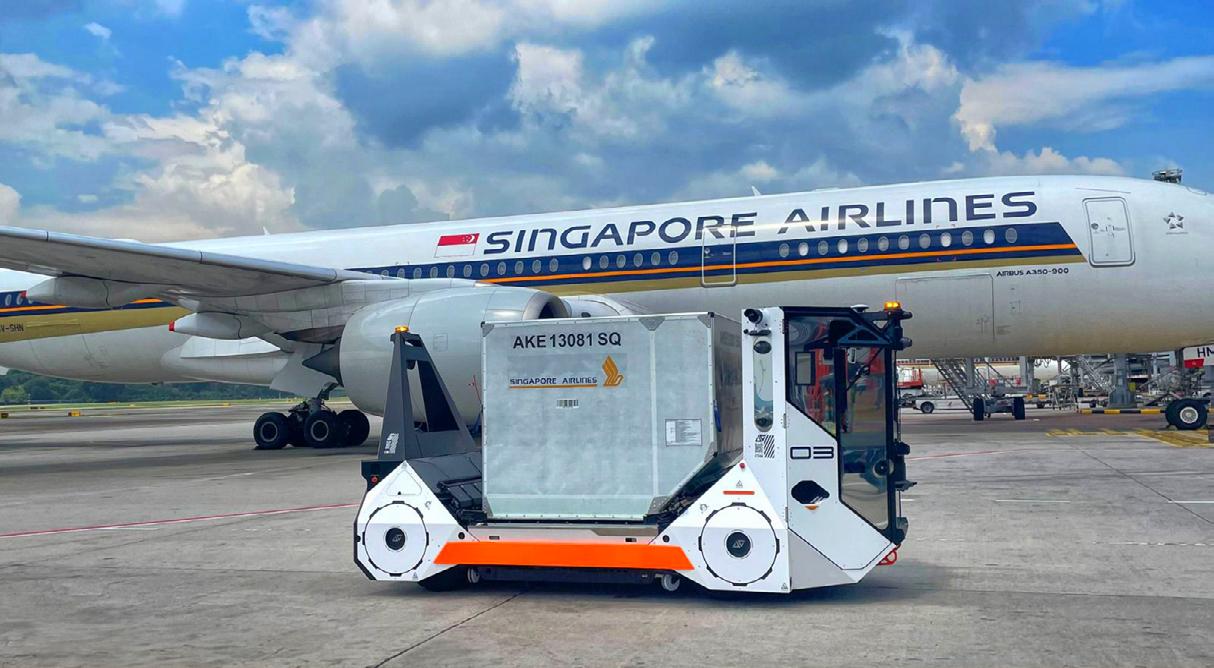
Aurrigo’s soaring aviation ambitions boosted by Executive Director appointment
One of the UK’s leading autonomous vehicle specialists has made a strategic new appointment to drive its aviation activity.
Aurrigo International plc, which listed on the Alternative Investment Market (AIM) in September 2022, has made Lewis Girdwood its Executive Director of Aviation Technology.
The former Head of Financial Planning and Analysis at EasyJet and Chief Financial Officer of IAG Cargo will be responsible for rolling out the company’s third generation Auto-DollyTug®, an all-electric,

autonomous vehicle that combines the utility of a baggage tractor with the ULD carrying capability of an airport dolly all in one.
There will also be a strong focus on introducing the firm’s Auto-Sim® 3D digital twin software to more strategic partners, technology that can help airlines and airports simulate the impact of electrification and autonomous vehicles in the digital world.
Lewis, who previously held non-exec Audit Chair position at Aurrigo, has worked with several high-profile businesses at different stages of their growth and maturity.
He has significant experience in aviation and delivering strong financial performance and will use this expertise to help deliver the company’s ambitious growth plans through the mix of strategic customer partnerships it has signed and those currently in discussion.
Lewis’ move has created an opening for a new board member, with Aurrigo welcoming Peter Whiting as a new independent nonexecutive Director and Chair of the Audit Committee.
He has enjoyed a twentyfive-year career as an investment analyst in equity capital markets, and has spent the past twelve years as a non-exec on the board of several public and private companies, currently including Kooth plc, FDM Group plc, Celebrus Technologies plc and Team17 Group plc.
For further information, please visit www.aurrigo. com or follow the company on its social channels. To watch the Auto-DollyTug in action, please visit www.youtube.com/ watch?v=3YEvKGpLiCE.
27 Manufacturing & Production Engineering Magazine
Optimising helical gear design to minimise audible noise
By Nicole Monaco, Global Marketing Manager at Portescap
A helical gear is an ideal motion solution for various medical applications thanks to a design that achieves gradual teeth meshing across a large surface area, optimising quiet operation for patient comfort. A significant contributor to this advantage is the consistent transmission of forces between the gear teeth, minimising the crucial factor of mesh stiffness deviation. Research and development shows that customisation of design areas such as tooth geometry can further reduce audible noise.
Portescap’s Vivek Salve, Deputy Manager Design and Development, and Rushikesh Gaikwad, Senior Engineer, explain why helical gears ensure quiet operation.
In hospital settings, as well as other locations where patients are under care
Meshing
stiffness deviation is a significant factor in transmission error and therefore gear noise.
- Nicole Monaco
and treatment, a quiet environment is crucial for their rest, recovery and comfort. This means that devices powered by electric motors, such as medical infusion pumps, ventilators, or
even surgical robots, need to operate quietly as well.
Gears are commonly used in combination with electric motors to enable a higher torque to be delivered, as well as to match the motor’s output with the load. A gear might also be integrated to reduce motor speed, and while this can be necessary for drive requirements, it can also help to reduce audible noise.
Gear design itself plays a significant role in noise management. Two common designs are spur and helical gears. Spur gears have straight teeth, mounted parallel to the gear’s axis. This is the simplest and most cost-efficient design, so spur gears are common to many applications. In contrast, helical gears feature teeth positioned at an angle to the axis, and it’s this helix formation that gives the gear its name. This design is

28 Manufacturing & Production Engineering Magazine
Machinery
The design of a helical gear ensures that the meshing teeth pair come into contact gradually and engage along a helical path.
Spur gears contact takes place simultaneously over the entire face width of the teeth, positioned in parallel to the gear’s axis.

more complex, but it enables gradual meshing of the teeth. The advantage is a reduction in impact, vibration and, crucially for these purposes, audible noise.
Gear operation
Theoretically, the smooth and continuous integration of gear teeth can transmit uninterrupted power. To optimise this potential, a new pair of teeth must come into contact before the preceding pair leave contact. In the case of spur gears, this contact takes place simultaneously over the entire face width of the teeth, positioned in parallel to the gear’s axis. As a result, an abrupt change in stiffness occurs at the transition point when the contact of the preceding teeth in mesh is over, and the new tooth pair comes into mesh.
Instead, the design of a helical gear ensures that the meshing teeth pair come into contact gradually and engage along a helical path. This means that contact commences at one end of the gear and moves across the face width as the gears rotate. In simple terms, this design means that helical gears have both smoother and longer contact of teeth in mesh than spur gears. This contributes to a lower transmission error, which is defined as the difference between the optimum position of the perfect output gear and the actual position of the gear. A lower variation in the speed and force of gear teeth pair engagement creates a smoother drive. Consequently, this helps the helical gear achieve quieter operation.
A helical gear is an ideal choice to minimise noise in applications such as medical devices.
- Nicole Monaco
Difference in mesh stiffness
Meshing stiffness deviation is a significant factor in transmission error and therefore gear noise. Meshing stiffness is the ability of the gear teeth to resist deformation under load. The lower the deviation level between the teeth, the lower the noise. This is another area where the helical gear has an advantage. In addition, the helical gear also features an increased overlap ratio. This represents the extent of engagement between the teeth of two gears during operation. The greater the overlap, the higher the contact ratio, and as a result, the lower the deviation in meshing stiffness.
Returning to a helical gear’s design, it achieves gradual engagement of its teeth and also makes contact over a larger surface, which increases the contact duration. These factors combine to achieve a higher overlap ratio, but they
also mean that the load is distributed more evenly across multiple gear teeth at any given moment, minimising the deviation in mesh stiffness.
To further enhance these advantages, helical gear teeth can be specifically designed. The Romax system level simulation supports in selecting the best helix angle to minimize the gearing Noise. Romax simulation followed by Noise measurement in an anechoic chamber validates the reduction in gearbox noise.
Customisation to minimise noise levels
A helical gear is an ideal choice to minimise noise in applications such as medical devices. Specific considerations on aspects such as the shape of the tooth, its geometry, as well as production materials and technology, can help to achieve significant enhancements to the smooth running of the transmission. While off-the-shelf helical gear designs may already fit the requirement, the chosen motion designer should also be able to customise the solution to achieve exacting needs.
Dependent on the specific noise level requirements of the application, Portescap’s engineers regularly integrate with OEMs and contract engineering teams to optimise motion solution designs in accordance with specific noise level requirements. In these cases, the basis of the helical gear design is often a fundamental starting point in achieving the optimum solution.
29 Manufacturing & Production Engineering Magazine Machinery
How to sell successfully: maximising the value of old machines Machinery
Whether restructuring, insolvency procedures or company closure: there are numerous reasons why a company may want to sell its used machinery. What to look out for and why the industrial auction company Surplex is the ideal partner.
Selling used machinery can be a challenging task, especially in a market that is characterised by rapidly advancing technological developments and where supply and demand can fluctuate greatly. A wellconsidered approach is required to effectively target potential buyers and achieve an optimal selling price. Why sell used machines?
There are many reasons why companies dispose of their machines. The main reasons are usually the desire for a better machine, the machine is no longer needed or it takes up too much space. However, financial reasons such as high maintenance and operating costs can also be a reason for selling. Many companies ask themselves how they can best sell their machines. Companies often come to their limits and do not know what prices they can

charge and how they can reach the most potential buyers.
What do you need to consider when selling?
The first step is to have your machine evaluated in terms of its condition and market value. A realistic evaluation can result in a competitive price for the machine and increase the chances that the machine can be sold successfully.
Various points are considered when valuing the machine. In addition to the age and the manufacturer, the condition of the machine is of course also important. Documents that explain the handling or provide information about regular maintenance improve the chances of finding a potential buyer. It is also important to know whether the machine is already a used machine or whether the seller is the first owner. The machine can then be sold privately. However, this often only reaches interested buyers from the local region and requires compromises in terms of price.
Once a suitable buyer has been

found, there are many more steps to take. Starting with the dismantling and transport of the machines through to the preparation of any necessary customs documents. These problems are usually difficult to organise and solve as a seller.
Many of these problems can be solved by using an online platform. This provides better opportunities to reach a wider purchasing audience and increase sales opportunities. Not only does the circle of potential customers increase in geographical terms, but there are also 2/3 opportunities to use digital media for sales. In addition to photos and videos, this includes 3D tours and detailed information about the machines.
Global marketing via social media channels such as Facebook and LinkedIn or newsletters, for example, allows interested buyers all over the world to be reached within a very short space of time. This opens new markets for the sale of used machines. Problems from transport to customs documents are handled by the platform and taken care of for the seller.
Why sell with Surplex?
Surplex stands out as a leading online industrial auction company due to its extensive expertise and excellent customer service. Not only does Surplex have a wide reach through its 18-language website and established network of buyers, but they also offer a platform that simplifies the entire selling process. The professional valuation of machines, as well as the comprehensive service from listing to handling, makes Surplex a valuable partner in the sale of used machinery. The industrial auction house offers suitable solutions for every size of company, regardless of the sector.
30 Manufacturing & Production Engineering Magazine



ATEX CERTIFIED SAFETY LIGHT CURTAINS FOR EXPLOSION PROTECTION
Production areas of the chemical industry, refineries, paint shops, bulk material processing, sawmills and grain processing companies have increased risk of explosion. For these applications, Schmersal has developed the ATEX certified SLC/SLG440 safety light curtains and grids.
The Ex-SLC440 for finger, hand and body detection are available in variants with a resolution of 14 and 30mm and ranges from 0.3 to 20m. The Ex-SLG440 safety light curtains are suitable for access control in hazardous areas. The waterproof and dustproof devices achieve IP66 and IP67 protection and can also be used outdoors.
The devices can be installed in potentially explosive gas and dust atmospheres, they are used to protect hazardous areas and access points for machinery. If one or more beams are interrupted, the dangerous movement is brought to a standstill.
SCHMERSAL | Enigma Business Park Malvern, Worcestershire, WR14 1GL
www.schmersal.co.uk
uksupport@schmersal.com

Machinery News
Nakamura-Tome NTY3-100V: The Fastest Just Got Even Faster
The Nakamura-Tome range of multi-tasking turning centres is renowned for being the fastest and most productive family of turn/mill centres on the market, but now, the fastest has just got even faster. The launch of the new Nakamura-Tome NTY3100V that is now available from the Engineering Technology Group (ETG) can reduce cycle times by more than 30% over its industry-leading predecessor.
The new multitasking NTY3-100V is the second instalment of the V series, following the WY-100V announced last July. The new V series has speed at the core of its design concept, and this starts with the incorporation of Nakamura’s ChronoCut technology. This groundbreaking innovation reduces the idle time between operations with a multitude of new technologies introduced to significantly increase production speed. The ChronoCut software shortens idle times during machining without changing the machining conditions or impacting the accuracy of the machine.

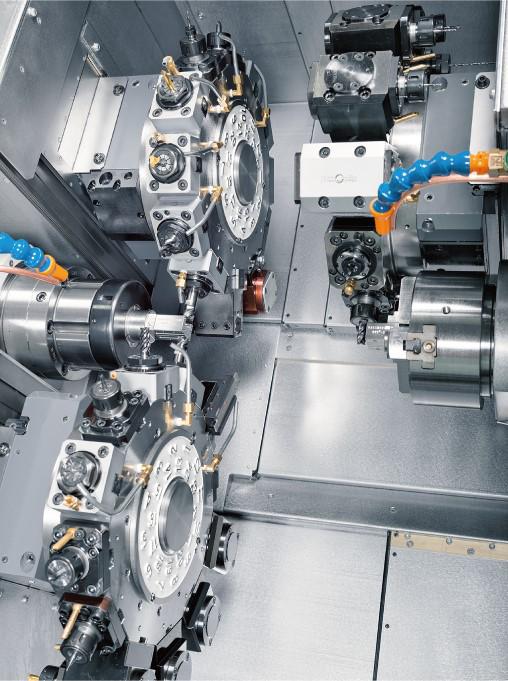

Artificial
intelligence: Schaeffler and Siemens intensify collaboration
Motion Technology Company
Schaeffler and technology
company Siemens have signed a memorandum of understanding (MoU) at the Hannover Messe. Both companies will advance the use of artificial intelligence in the
industrial sector and therefore make a significant joint contribution to shaping the digital production of the future.
At the Hannover Messe, Schaeffler and Siemens are once again showing the successful collaboration with the “Siemens Industrial Copilot,” an
industrial automation solution using AI. It is connected to a production machine from Schaeffler Special Machinery at the Hannover Messe. The AI assistant makes the work significantly more efficient for the employees on the shop floor because complex automation codes for the machine can also be generated with natural spoken words.
Siemens Industrial Copilot: increased agility and efficiency in production
Schaeffler is already using a large number of AI solutions in various applications. The “Siemens Industrial Copilot” is operating in pilot mode on a robot cell from Schaeffler Special Machinery, the Schaeffler Group’s special machine construction unit. This project was jointly developed by Schaeffler and Siemens. The AI solution assumes tasks such as creating complex programming codes for manufacturing processes, thus reducing the outlay for machine operators. The “Siemens Industrial Copilot” also has access to relevant documentation, guidelines and manuals to help employees identify potential causes of errors. The AI-based assistant offers further potential with regard to machine correspondence or validations.
32 Manufacturing & Production Engineering Magazine


01442 206100 INFO@FRIEDHEIM.CO.UK WAB.FRIEDHEIM.CO.UK
MOONS’ Industries launch in the UK
Motors and Drives specialists MOONS’ Industries are delighted to announce the launch of Moons’ Industries (UK) based in Reading, Berkshire. This development is the latest chapter of a journey which started nearly 30 years ago building on a commitment to solving problems and meeting the need of its customers. Shanghai based MOONS’ Industries manufacture an extensive range of motion control products from facilities in Asia, North America and Europe.
Watch video: www.youtube.com/ watch?v=mb2YEwkH2cU
Founded in 1994, MOONS’ is a global top 3 manufacturer with a yearly shipment of more than 30 million motors of all types, including 10 million hybrid stepper motors.
Moons’ are acknowledged for developing high quality motion control products and offer a range which includes over 12 types of motors and actuators with a focus very much on developing innovative Slotless and Coreless motors.
Their choice of Slotless Brushless DC motors includes 11 types of winding, with the ø16mm series of slotless BLDC motors available in short, long and XL


versions with 3 different power outputs, while the latest MICRO options includes slotless motor, gearbox, encoder, driver, and mechanical components. Coreless Brushed DC motors which provide excellent performance and are easier to control, are available in 6 diameters of 8mm, 10mm, 13mm, 16mm, 17mm and 24mm.
Their innovative hollow rotor design enables rapid acceleration combined with low rotational inertia, no cogging and no iron loss, housed in a compact and light package. When coupled with a gearbox they can deliver high torque, while the encoder can be used for precise positioning applications.
MOONS’ understands that choosing the right motor for your motion control application can significantly impact product performance, improving reliability and at lower cost. With so many types of DC motors available; permanent magnet steppers, hybrid steppers, brushless DC, step servos and slot less motors, it’s tricky to know which one to choose.
However, the combination of MOONS extensive product range, advanced technology, along with our ‘customerfirst’ focus, will help UK customers to optimise the performance of their systems.
It’s time to make sure your OEM’s move in better ways with MOONS’.
More at: https://www. moonsindustries.com/uk
Laser Components produces custom thin film polarisers for polarisation separation in high power laser applications from UV to NIR. Broadband plate polarisers are optimised for low dispersion, making them the perfect solution for polarisation separation of broadband systems such as Ti:Sapphire femtosecond laser. Plate polarisers are generally manufactured with identical coatings on both sides for use in both directions and are optimised to be installed at a ~72° angle of incidence.
Our in house IAD and IBS coating processes are used for production of these parts. These technologies are optimised for deposition of compact coating layers allowing for complex custom designs.
Further information: Thin Film Polarisers - High Power Polarisers (lasercomponents.com)
Product News 34 Manufacturing & Production Engineering Magazine
Broadband TFPs

Microchip Earns Certification in ISO/SAE 21434 Road Vehicle— Cybersecurity Engineering Standard from UL Solutions
As everything from infotainment to engine systems in the automotive industry becomes more dependent on wireless and in-vehicle network connectivity, the need for robust cybersecurity measures has increased. The ISO/SAE 21434 standard has emerged to set requirements for road vehicle cybersecurity risk management processes. These cybersecurity requirements help regulate automotive products across the complete product lifecycle—from concept through design, production, maintenance and decommissioning. Adhering to these standards, Microchip Technology’s corporate processes associated with specific automotive work products have recently been audited by a third party, UL Solutions, and certified as compliant to ISO/SAE 21434. Developed by the International Organization for Standardization (ISO) in conjunction with the Society of Automobile Engineers (SAE) International, the ISO/SAE 21434 standard was developed to help
organizations define cybersecurity policies and manage risk. It is a demanding specification with 45 security categories, known as work products, each of which specifies a unique set of requirements that encompass all aspects of designing electrical and electronic systems for road vehicles, from ICs and software to firmware and libraries.
The ISO/SAE 21434 designation also confirms that a certified corporate cybersecurity management system is in place. This verifies that cybersecurity is a priority focus at the organization, from executive leadership to all organizational disciplines including the design, test, product, applications, marketing, quality, verification and validation teams. Stakeholders involved in the product lifecycle are required to complete cybersecurity training and meet designated qualifications. A Threat Analysis and Risk Assessment (TARA) methodology is also incorporated at multiple stages of the product lifecycle when devices will be integrated into automotive cybersecurity-related platforms.
MOONS’ understands that choosing the right motor for your motion control application can significantly impact product performance, improving reliability and at lower cost.
While each OEM is responsible for proving compliance at the vehicle level, ISO/SAE 21434 encourages all companies in the production ecosystem to play a role in proactively helping manage cybersecurity threats. Customers utilizing electronic control units that incorporate Microchip’s security products, designed within the ISO/SAE 21434 certified process framework, can be relieved of the arduous task of reviewing thousands of pages of process documentation to determine compliance. This reduces the burden placed on Tier-1s and OEMs to prove they have a strong foundation in security.
To learn more about Microchip’s ISO/SAE 21434 certification and automotive products, visit the automotive security page on the Microchip website.
35 Manufacturing & Production Engineering Magazine Product News
RS brings together health and safety industry professionals and PPE buyers to share insights on sustainability
RS, a trading brand of RS Group plc (LSE: RS1), a global provider of product and service solutions for industrial customers held an event at its Corby headquarters recently to bring together health and safety industry specialists, suppliers and organisations from a variety of sectors that buy Personal Protective Equipment (PPE). The theme of the event was sustainability and attendees shared their knowledge and insights around this rapidly evolving topic.
The Sustainability and PPE event featured elements including a panel discussion, round table conversations and a chance to view some of the latest innovations in sustainable PPE, with a Meet the Manufacturer mini-exhibition.
Panellists included representatives from firms leading the way in sustainable PPE and recycling solutions: Avena, a provider of textile recycling and waste disposal services, and Globus Group, one of the world’s leading manufacturers of safety solutions like hand, eye, head, hearing and respiratory protection. The panel also featured Roy Wilders, manager, registered safety suppliers scheme, from the British Safety Industry Federation (BSIF) and RS representatives from the Environmental, Social and Corporate Governance (ESG) and Safety Solutions teams.
The panel explored themes like sustainable and fit-for-purpose PPE solutions, verifying an ethical supply chain and upcoming new health and safety legislation, as well as insight on how to start or progress the journey to Net Zero.
RS Group’s VP Social Responsibility & Sustainability, Andrea Barrett, and Head of Compliance, Quality, Ethical & Sustainability at RS, Danny Hobson, also presented its ESG framework and proposition to illustrate to customers the work going on behind the scenes within the organisation to achieve Net Zero. They highlighted the ethos and criteria behind its Better World product range, which enables customers to easily make greener product selections that are better for people, planet and the business. Better World products are categorised as those which are made more sustainably, offer a sustainable solution like reducing energy and emissions or support circularity, with an increased lifespan due to being reusable, recyclable, or repairable.
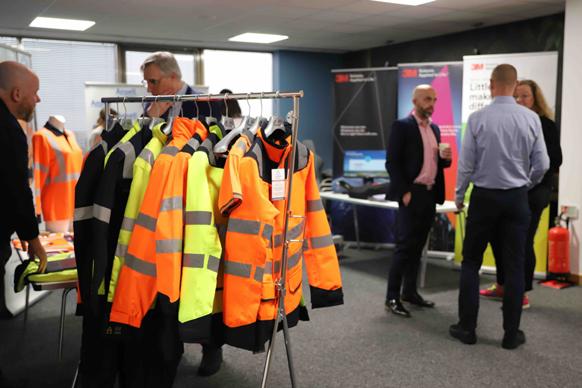

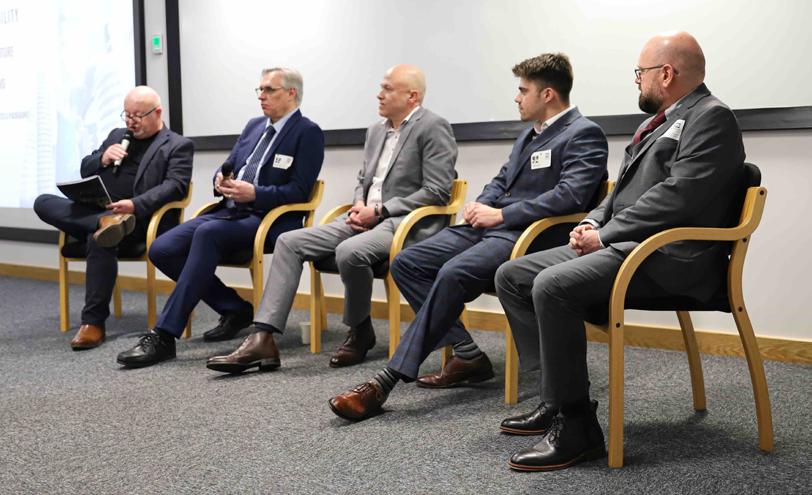
ELSEWEDY ELECTRIC: 85 Years of Expertise and Industrial Excellence Fueling National Economy
ELSEWEDY ELECTRIC, a wellrenowned industrial tycoon, proudly celebrates 85 years of unparalleled expertise and commitment to driving economic growth, highlighting a series of groundbreaking accomplishments that have solidified the company’s position as an industry leader. Specializing in integrated energy solutions, infrastructure, and digital innovations, ELSEWEDY ELECTRIC has emerged as a global giant with a clear vision of supporting the national economy through the localization and development of the domestic industry.
Established in 1938 ELSEWEDY ELECTRIC has evolved from a local manufacturer of electrical products into a global giant providing integrated infrastructure solutions. Backed by the expertise of over 18,000 employees, and more than 20 subsidiaries, its current market value surpasses 4.8 billion USD.
ELSEWEDY ELECTRIC also champions sustainable development efforts with green energy projects and smart cities in Africa, the Middle East, and Eastern Europe. Aligned with its 2030 sustainability strategy, the company aims to expand its positive impact globally, focusing on decarbonization, digitization, and sustainable transformation.
News 36 Manufacturing & Production Engineering Magazine
Events & Awards
ETG Creates a Spark of Interest With an EDM Event
Recognised as an industry leader in the EDM industry, the Engineering Technology Group (ETG) recently hosted an EDM workshop for manufacturers with a keen interest in the technology.
ETG Ireland kicked off their ‘Decade of Innovation’ workshop series with an EDM Applications workshop on the 23rd of January, which was hosted by Scott Elsmere, ETG’s Product Manager and renowned expert on Mitsubishi EDM and OPS-Ingersoll product lines. The day was a huge success with a great
turnout of customers from across Ireland and Northern Ireland. Scott covered a range of topics and this was supported by live demonstrations on a Mitsubishi MV1200R EDM machine, which was followed by an interactive Q&A session. From understanding the EDM process, and material types, improving part straightness, achieving better taper accuracy, modifications for coated wires and key parameters in spark erosion – the event was an informative and action-packed day.
The EDM workshop provided an opportunity for toolmakers and

manufacturers from across the country to network and share their knowledge, learn new tips and tricks and also gain a deeper understanding of ETG Ireland and the remarkably wide and diverse support services. Many attendees said they would highly recommend the workshop to others.
This event was the first instalment of ETG Ireland’s ‘Decade of Innovation’ series of workshops, and it will continue with a Mastercam 2024 workshop scheduled soon. For more information on the upcoming schedule of events, please contact ETG Ireland.
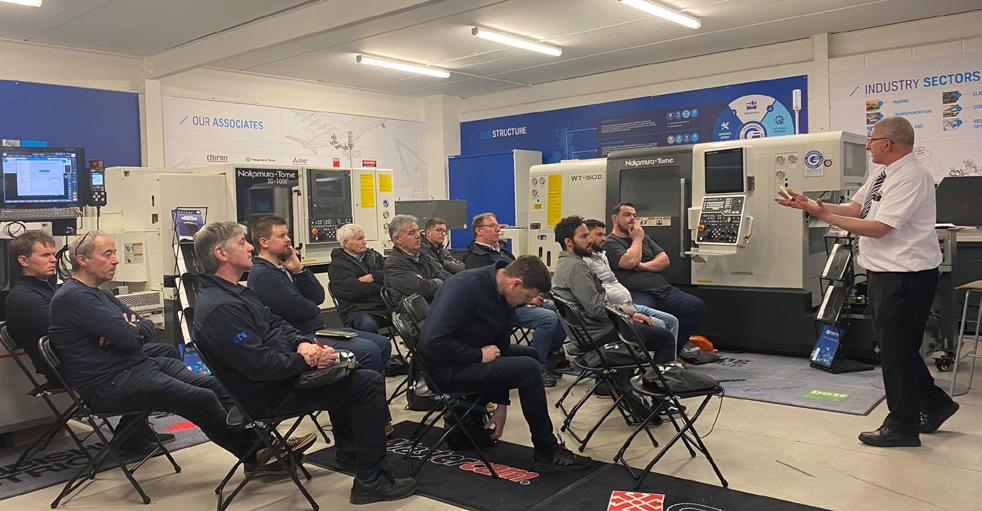



37 Manufacturing & Production Engineering Magazine
Events & Awards News Machined castings. Turned parts. Complex pressings and extrusions. Customers expect parts to be pristine. PRECISION AQUEOUS CLEANING demands MecWash. Cleanliness specs are getting tougher and your customers are enforcing them ever more rigorously Get a MecWash and relax • IMMERSION & ROTATION • TARGETED JETTING • ULTRASONIC AGITATION • VACUUM DRYING TRUSTED BY NAMES LIKE • Renishaw • Rolls Royce • Goodrich • Perkins • JCB • Delphi • SKF • Parker Hannifin • Meggitt • Husco DELIVER THE TOUGHEST CLEANLINESS SPECS. RELIABLE PERFORMANCE WITH MECWASH. Cost-effective Sustainable Reliable For the best wash machine solution for your production line, talk to MecWash Contact us today on 01684 271600 or visit www.mecwash.co.uk YOUR EXPERTS IN COMPONENT CLEANING Designed and manufactured in Britain
Measurement, Sensors & Monitoring
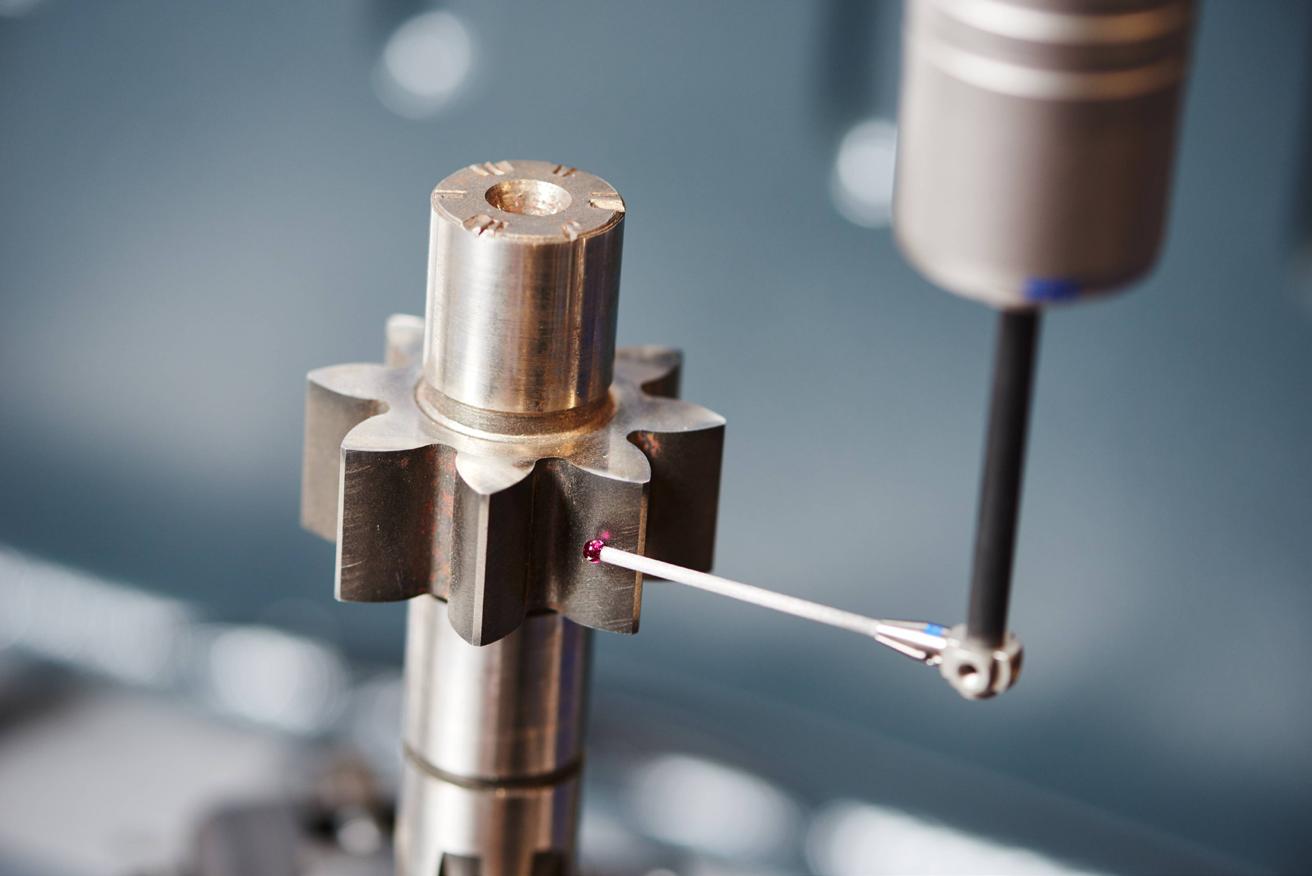
Custom ICs for enhanced high-precision metrology
Application specific ICs improving measurement quality
Manufacturers who need high positional accuracy for their machinery rely on the accuracy of metrology technology.
Here, Ross Turnbull, Director of Business Development and Product Engineering at ASIC design and supply company Swindon Silicon Systems, explains how custom Application
Specific ICs (ASICs) offer enhanced precision for even the most demanding measurement applications.
Metrology instruments are a crucial element of the manufacturing plant. Whether for calibrating production machinery or for postproduction verification, metrology equipment goes a long way in ensuring a high-quality finished product that meets specification.
Coordinate measuring machines (CMMs) are an example of a metrology instrument, able to provide measurements in all three dimensions. In post-production quality processes, CMMs are used to measure the geometry of physical objects for any manufacturing flaws or errors. This is achieved with a scanning probe by measuring discrete points or lines across the object. Control of the probe

angle is also possible, allowing the machinery to measure surfaces that would be otherwise unreachable.
Converting the motion of the scanning probe into useful positional information is possible with the use


of encoders. Encoders combine a scale, similar to the markings on a conventional ruler, with a readhead describing motion relative to the values on the scale.
Exploring CMM circuitry
The encoder typically converts a physical stimulus into an analogue signal. For this signal to be understood and interpreted by digital devices, including the metrology software, this signal must first be digitised.
It’s possible to use a variety of off-the-shelf integrated circuits (ICs) to perform the necessary tasks of signal amplification and conversion. However, for an optimised solution, the roles of these individual ICs can be condensed into a single chip: an ASIC.
An ASIC is a chip that has been designed exactly for customer requirements. A complete custom design approach results in a highperformance IC with capabilities beyond those offered by standard off-the-shelf devices.
By taking a careful approach to design, it’s possible for an ASIC to encompass all the features of several standard ICs in one package. Consolidating functionality into a single package typically allows for a reduction in PCB size. A more compact size allows for a smaller and lighter encoder that can be easily designed into CMM equipment.
ASIC design also facilitates greater performance where it matters. In a position sensor, this might be a nonlinearity specification for improved sensor calibration and accuracy. This is where working with an experienced ASIC designer can be hugely advantageous; the entire signal path can be optimised for a chip that offers both the technical and commercial advantage to the customer.
In metrology, even a minute fraction of a millimetre could be the difference between product success and failure. As a result, it’s vital that metrology equipment and the sensors within are class-leading. With the help of ASICs, accuracy of these devices can be enhanced for improved product quality and efficiency.
38 Manufacturing & Production Engineering Magazine
Measurement, Sensors & Monitoring






•
•
•
•
•
Workforce scheduling based on skills and projects
Clocking in systems for different environments
Cost centre tracking for specific projects
Automated alerts and attendance reviews at a glance
Automatic building access reports


www.kelio.co.uk 01442 418800 enquiries@kelio.co.uk
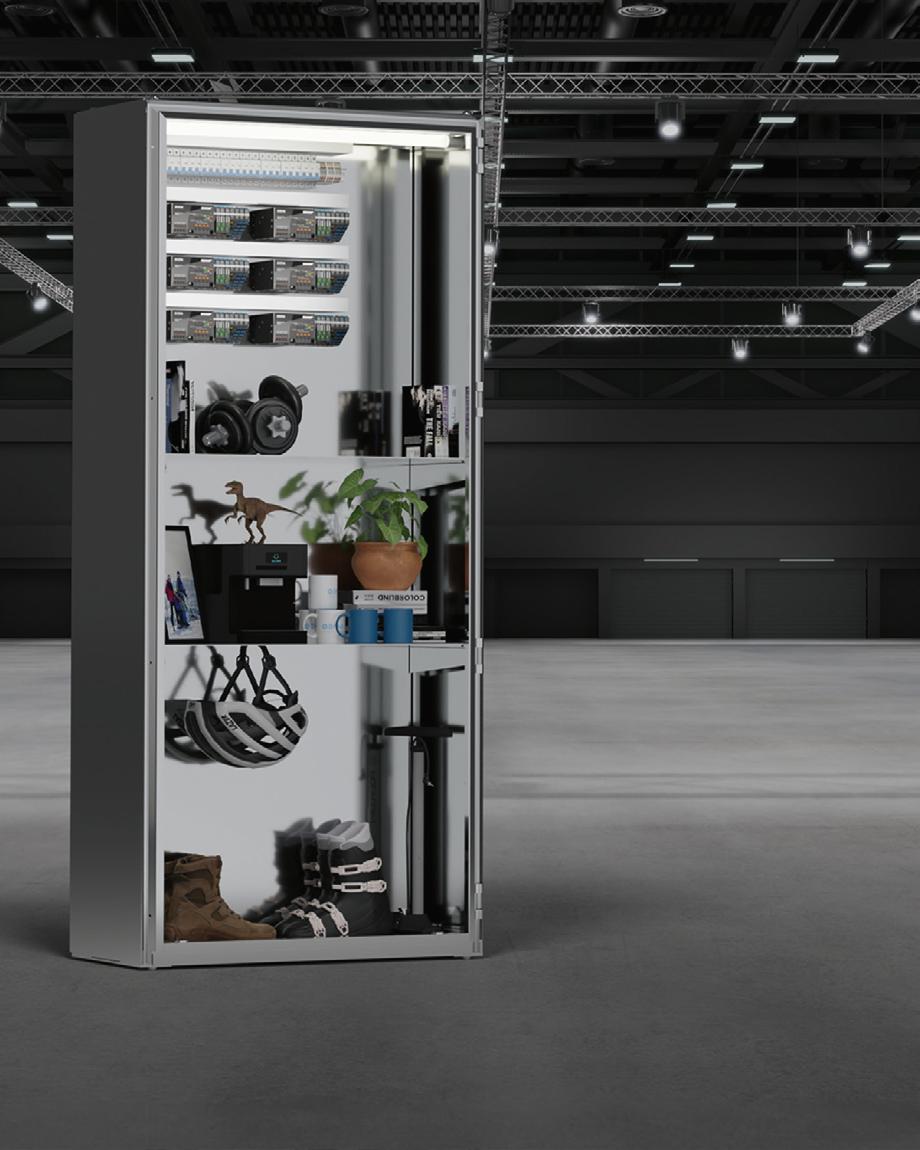

39 Manufacturing & Production Engineering Magazine
Workforce Management and Access Control in one solution! e-t-a.co.uk Benefit from a perfectly harmonised complete system for the DC 24 V control voltage level. The modular REX system flexibly adjusts to your application. It saves up to 60 % space in the control cabinet and can be easily installed thanks to its patented connection technology. E-T-A Circuit Breakers Ltd. +44 (0) 1296 420336 info@e-t-a.co.uk CREATES SPACE The REX-System Innovative Liquid Flow Measurement Solutions Titan is a leading design and manufacturer of innovative end user and OEM high-performance flow meters, used within a wide range of environments and applications. Ultrasonic Flowmeters Turbine Flowmeters Oval Gear Flowmeters Instrumentation
Compact, robust, reliable
Excellent accuracy and repeatability
Measure low to high flow ranges
High chemical resistance
OEM bespoke design capability REQUEST A QUOTE TODAY +44 (0)1935 812790 sales@flowmeters.co.uk www.flowmeters.co.uk
Harnessing the power of technology to drive efficiencies in manufacturing Technology
By David Maitland, Operations Director, Air Products, UK, Ireland, Israel and Italy
Most industries have been under significant cost and inflationary pressures over the last few years and manufacturing is no different. Add urgent climate concerns to the mix, and the need to improve efficiencies becomes ever more pressing - both as a way to manage costs and drive profitability, but also deliver on decarbonisation goals.
Digital technologies form a critical part of the sector’s response and offer a way to make short- and longterm gains. Whether it’s gathering data and insight on operations, using virtual reality to train the workforce,

or helping to overhaul outdated processes, the power of robust data - and the ability to translate and use it effectively, should not be underestimated.
At Air Products the push to digitise operations has yielded significant results. As operations director, integrating technology into our processes has been a key focus, enabling us to swiftly anticipate and address challenges before they cause disruption to supply or inefficient operation.
For instance, a data-driven approach has allowed us to pinpoint and rectify power overuse at our Carrington plant , significantly boosting energy efficiency. It’s also enabled us to address equipment malfunctions at our Didcot plant. We’ve digitised a total of 70 plants to date including our own Air Separation Units (ASUs) and customer facilities, with ongoing data analysis remaining crucial to the way we operate.
But having access to the right data is only part of the equation –it’s also critical that manufacturers have the ability to understand and use it effectively. To tackle this challenge, we have established a dedicated specialised data team in Hull to monitor and optimise plant operations. This team grew by 30% in 2023, underscoring our commitment to using real time, hard data and insight to improve operations. Regular reviews of operational data with the process engineering team help


unlock incremental improvements that together help control costs as well as emissions.
But technology has not only revolutionised our processes, it has also had a significant impact on the way we train and learn. We’re harnessing the power of simulation learning for our workforce, training them on new technologies developed in Korea and the US. This ensures they are ready to work on our new assets with minimal room for error, and familiar with our new air separation units as they arrive in the UK.
Above all, the approach to better sustainability and efficiency has to be holistic, and all-encompassing. From unlocking hydrogen as the fuel of the future, to the use of oxygen in combustion technologies, and nitrogen and carbon dioxide in reducing food waste, like so many manufacturers, we are heavily involved in supporting our customers in lowering emissions and generating a cleaner future. But this must not be to the detriment of scrutinising our own operations.
Our investment in plant infrastructure is ongoing to meet demand, and data, digitisation and technology-enabled learning play integral roles. By modernising our processes, we aim to contribute to a cleaner future while ensuring operational efficiency for years to come.
40 Manufacturing & Production Engineering Magazine
Accelerating Sustainability: LEVC’s and Axil’s Collaborative Journey
In the heart of the UK’s manufacturing landscape stands LEVC’s Ansty plant - a symbol of innovation and sustainability. Established in 1908, LEVC (London Electric Vehicle Company) has long been synonymous with the iconic black cabs we all recognise.
However, in recent years, their focus has shifted towards eco-friendly transportation, notably with their TX model, which has saved a remarkable 200,000 tonnes of CO2 since 2018. With over £1.1 billion invested in electric vehicles, LEVC is leading the charge for green manufacturing.
Their Ansty plant, constructed in 2018, is the UK’s first purpose built electric vehicle hub.
LEVC’s journey towards sustainability is not just about vehicles—it’s about environmental stewardship. That’s why, since 2020, they’ve been partnering with Axil Integrated Services, one of the UK’s most specialised total waste management companies, to improve waste processes and drive our costs across the manufacturing plant. Having recently extended their partnership for another year, the LEVC-Axil collaboration is set to continue its remarkable journey.
The partnership has led to significant improvements in waste management efficiency. Metal cardboard and plastic rebates increased by an impressive 212% (£142,000 over three years.) and zero waste was sent to landfill, marking a substantial step towards sustainability. Additionally, 83% of waste was recycled, and 17% was recovered for energy from waste.
Commenting on the partnership, Craig Lea, Head of Technical Services at LEVC, highlights the collaborative effort: “Our partnership with Axil has been fantastic from day one. Over the past three years,

our focus has been on educating our workforce about the importance of waste segregation and engaging them in new waste initiatives. By implementing changes, we’ve significantly enhanced our waste management processes, working together to surpass our sustainability goals while unlocking previously unidentified rebates.
“They are more than just a supplier; they’re supportive collaborators who deliver great service and value, whilst proactively solving problems. With a keen eye for identifying gaps and addressing issues early, they’ve always dealt with us on a personal level, creating a highly collaborative environment”
LEVC and Axil are united in their commitment to shaping the future of mobility sustainably. By considering every aspect from production to waste, they’re not just providing electric vehicles; they’re delivering a promise of sustainability and accessibility for all.


CHALLENGE AXIL TO REENGINEER COSTS OUT OF YOUR BUSINESS WASTE
To gain a clearer understanding of your waste operations, we will visit to carry out a detailed site audit. Our waste management experts will understand your waste streams and the challenges you face - and develop a service proposal tailored to accommodate your needs.
We will explain how our innovative solutions can re-engineer your waste to reduce your costs and increase your recycling.
TELEPHONE: 01536 216560
EMAIL: INFO@AXIL-IS.COM
WEBSITE: AXIL-IS.COM
41 Manufacturing & Production Engineering Magazine
Sustainability
Latest Product Launches
The SICK W10 Swipeand-Set-up Touchscreen Sensor is a World First
SICK has unveiled the world’s first photoelectric sensor with a touchscreen display, heralding the future for universal and easy-set-up sensing. The pioneering SICK W10 is a versatile all-in-one sensor that represents a major step forward in precise detection technology, adaptable for countless industrial automation applications.
Reliable and repeatable
The SICK W10 is a photoelectric proximity sensor that uses intelligent onboard algorithms developed from the experience of common industry applications to achieve high repeatability across the board.
With an IP69K-rated stainless steel housing and eye-safe Class One visible red laser, the SICK W10 adapts
effortlessly to widespread uses in factory and logistics automation with built-in modes for standard, high-speed or precision operation. The robust SICK W10 is just as resilient to harsh washdown environments as it is on fastmoving production lines.
Versatile and adaptable
The SICK W10 therefore masters everyday presence and leading-edge detection duties, even with highlyreflective, dark or uneven surfaces. It is ideal, for example, for level detection in bowl feeders, or presence detection of components with irregular shapes or heights, even if they have shiny metal surfaces.
Screen lock function
The W10 has a secure screen locking function and access restrictions can be

set up to prevent unwanted changes to the sensor settings. The single value teach-in enables rapid configuration at a defined distance, while the twovalue teach-in enables objects of different heights to be detected without increasing the risk of errors. A manual mode further extends the options for maximum flexibility.
The SICK W10 incorporates IO-Link connectivity so that sensor data can be shared with Industry 4.0 IoT systems, ideal for machine diagnostics and troubleshooting, as well as for edge configurations. IO-link also provides the option of remote set-up and easy device replacement.
ABB achieves world first with liquid-cooled IE5 SynRM motor that sets the benchmark for energy
efficiency and high power output
ABB has achieved another world first for its IE5 SynRM (synchronous reluctance motor) series with the launch of a new version that combines the benefits of ultrapremium energy efficiency with highly effective liquid cooling.
The new design sets a new benchmark for high power output and reliability in a compact footprint.
Customers can use IE5 SynRM Liquid-cooled motors to save energy costs and cut emissions in new projects

or as a drop-in replacement for less efficient motors. They are ideally suited to a wide range of industries including marine propulsion, rubber and plastics production, and food and beverage.
The motors are robust, with tight seals to keep out moisture, dirt and dust, and a smooth outer surface to prevent dust build-up. This makes them perfect for demanding applications that require high power density where space is restricted such as marine propulsion systems and thrusters. Furthermore, the motors do not need fans or ventilation, so they do not disturb the surrounding air or release heat into the local environment. This is a major benefit in processes that are impacted by airflow, such as rubber and plastics production, and food and beverage applications like chocolate conche machines. With no fans, the motors also enhance the working environment by reducing noise levels.
The high power output of the liquidcooled IE5 SynRM offers increased
42 Manufacturing & Production Engineering Magazine

The SICK W10 uses the precise laser triangulation detection principle. Accurate and reliable operation is assured by the focused beam that produces a small light spot and a precise evaluation receiver.
The short-range version has a working distance between 20 mm and 400 mm and the long-range version offers ranges from 20 mm to 700 mm. With a response time of 1.5 ms in speed mode, reliable switching is assured at high speeds.
Website: www.sick.com
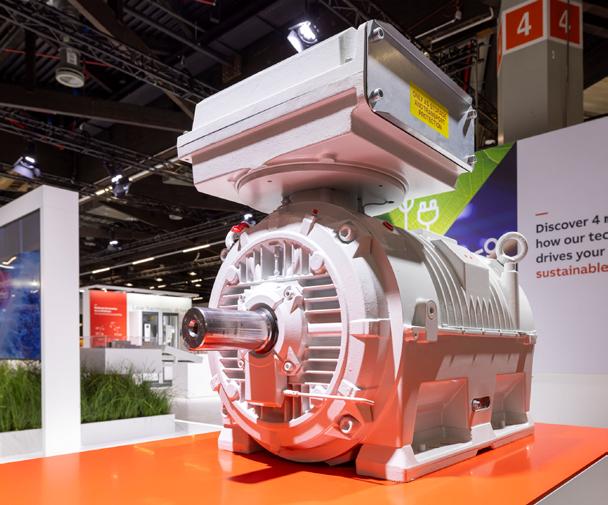
design flexibility. It can enable a machine to be upgraded to deliver a higher power output within the same footprint, or it can allow for a more compact installation footprint while still providing the same output.
The IE5 SynRM Liquid-cooled motors are significantly lighter than competing designs, making them easy to handle and install. A 240 kW IE5 SynRM motor in frame size 315 weighs 870 kg, this is almost half the weight of a corresponding IE3 induction motor.
IE5 SynRM Liquid-cooled motors are available in frame sizes IEC 200315 in aluminum frames, with steel available on request. The versatile design enables the motors to provide exceptional performance over a range of powers from 37 to 710 kW at 400 V.
Advantech’s New Industrial Communication Gateways Pioneer in Green Energy Latest Product Launches
Advantech announces the launch of its latest Industrial Communication Gateway series, tailored to meet the evolving needs of the green energy market. This groundbreaking series featuring the new models, ECU-1370 and ECU-1260, represents years of continuous development and innovation and reflects Advantech’s commitment to sustainable energy solutions.
New High-Performance Gateways: ECU-1370 and ECU1260
The ECU-1370 and ECU1260 models are the highlights of this series, embodying cuttingedge technology and robust features tailored for green energy applications.
The ECU-1370 is designed with a Cortex®-A53 Quad core 1.3GHz processor, 4GB DDR4, and 32GB eMMC, making it ideal for demanding applications. It offers multiple communication interfaces including 1 x CAN, 1 x RS-232/485, and 3 x GbE, along with 24 DI and 6 Relay outputs. This model operates efficiently in a wide temperature range of -40 to 80°C, ensuring reliability in various environmental conditions.
The ECU-1260 is equipped with a Cortex®-A35 Dual Core 1GHz processor, 2GB DDR3L, and 16GB eMMC. It provides 1 x CAN, 3 x RS232/485, and 2 x GbE interfaces. This model also features a durable design, capable of operating in temperatures ranging from -40 to 70°C, making it suitable for diverse industrial settings.
Enhanced Connectivity with Innovative Software Bundles
The Industrial Communication Gateway series stands out with its robust and versatile features, including multi-protocol support, high-performance IoT capabilities, and an industrial-grade design ensuring reliability in challenging environments. Most of the gateways are equipped with EdgeLink software, supporting over 200 OT drivers to
connect to various devices, and enable smooth data flow across diverse protocols like IEC 61850, IEC 60870, OCPP, DNP3, and more. Also, leveraging the power of Advantech’s EdgeHub SaaS, the gateways in the large-scale infrastructures can be remotely monitored and managed on the single platform, saving 30% on setup and maintenance. The comprehensive gateway solutions facilitate seamless edge-to-cloud integration and simplifies the management of renewable energy systems like solar and wind power.
Continuously Fulfilling Commitment to Sustainability
Advantech’s Industrial Communication Gateway series is not just a technological advancement but also a significant contribution to environmental sustainability. By focusing on the green energy market, Advantech is contributing to global efforts in reducing carbon emissions and promoting renewable energy sources. The series is expected to play a pivotal role in the management of solar, wind, and other renewable energy systems, offering enhanced efficiency and reliability.
For more information on the Industrial Communication Gateway series and other innovative solutions from Advantech, please visit https://www.advantech.com/ en-eu/products/intelligentcommunication-gateways/ sub_74040144-3f21-4a2c-b01edcadd0778058

43 Manufacturing & Production Engineering Magazine
Training & Education

RTITB Launches Overhauled Materials Handling Equipment Instructor Course to Improve Safety Standards
“We wanted to deliver a new training syllabus and examination that gives companies the reassurance that if they have an RTITB Instructor, they will comply with legislation and be training safer, more efficient operators within the workforce,” says Laura Nelson, Managing Director for RTITB, the leading accrediting body for workplace transport training.
“This is a vital step in ensuring we elevate standards within our industry, while also giving Instructors the skills and knowledge they need to meet modern learning preferences effectively,” she continues.
Uniquely, the course will cater to more diverse candidates. It is currently the only Instructor course that can be tailored with reasonable adjustments. That means it can meet the differing needs of candidates. For example, those who are neurodiverse. This opens the door to a career as an Instructor for many who otherwise may have felt excluded.
The new syllabus is the first to consider current knowledge around training expectations and learning styles. Plus, the modern tools, methods, and technologies available to Instructors. It includes a focus on how different delivery methods contribute to effective learning for
The new syllabus is the first to consider current knowledge around training expectations and learning styles.
Nuclear Science
varied types of learners, including face to face, blended, and digital styles.
The course itself uses a ‘flipped classroom’ learning approach. Candidates will participate in selfpaced eLearning outside of faceto-face time. The Instructor will then confirm the learning with candidates. This gives Instructors first-hand experience of how digital learning is used effectively.
The assessment includes an Associated Knowledge test. This open book test can be attempted multiple times during the course. It uses a bank of randomised content to avoid predictability.
Key
Candidates must also successfully complete an In Class Lesson Delivery test and a Practical Lesson Delivery test. This ends with a Professional Discussion. An Advanced Operational Competence Test is also required.
Course delivered by:
The RTITB Materials Handling Equipment Instructor course and examination will be available from RTITB Instructor Centres across the UK from 3rd June 2024. The changes apply to all courses, including novice, conversion, and re-registration training.
The University of Birmingham • University of
The University of Manchester • The University
Find out more at rtitb.com, contact solutions@rtitb.com or call +44 (0)1952 520200.
Repair & Maintenance

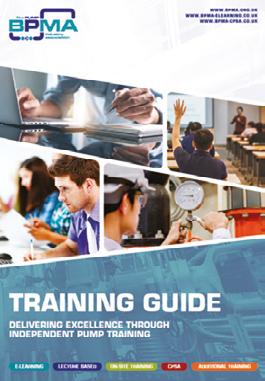


PG
PG Short
Designed to create a generation and scientists with the skills and safe future for nuclear MSc - 1 year full time MSc - 2 or 3 year part
Diploma •
Courses for
Central
• Breadth 44 Manufacturing & Production Engineering Magazine
features: Demand-driven
For more information call 0121 601 6691, scan code for the training guide or email: training@bpma.org.uk
Course Independent Pump Training from 2 day course 20th & 21st June 2024 Classroom & hands on training Held at BPMA Offices West Bromwich B70 6PY
Pump

Science and Technology
Nuclear Science and Technology
MSc - 1 year full time
MSc - 1 year full time
MSc - 2 or 3 year part time

MSc - 2 or 3 year part time (Taught and Distance Learning)
PG Diploma • PG Certificate
Short Courses for CPD
PG Diploma • PG Certificate
Short Courses for CPD
Designed to create a generation of nuclear engineers and scientists with the skills to secure a sustainable and safe future for nuclear energy.


info.ntec@manchester.ac.uk
Register at:
delivered by: The University of Birmingham • University of Central Lancashire • The University of Leeds • The University of Liverpool The University of Manchester • The University of Sheffield • The Nuclear Department of the Defence Academy
features: Demand-driven • Breadth of learning • Delivered by experts • Flexibility • Short-course format
or visit www.ntec.ac.uk
Course
Key
For more information: email: info.ntec@manchester.ac.uk or visit www.ntec.ac.uk Register at: Central Lancashire • The University of Leeds • The University of Liverpool University of Sheffield • The Nuclear Department of the Defence Academy
of learning • Delivered by experts • Flexibility • Short-course format
generation of nuclear engineers skills to secure a sustainable nuclear energy. time part time Certificate for CPD
Breadth
the skills to secure a
safe future for nuclear energy.
Designed to create a generation of nuclear engineers and scientists with
sustainable and
For more information: email: info.ntec@manchester.ac.uk or visit www.ntec.ac.uk Key features: • Demand-driven •Breadth of learning •Delivered by experts •Flexibility •Short-course format
of Birmingham • University of Central Lancashire • University of Leeds • The University of Liverpool • The University of Manchester • The University of Sheffield • The Nuclear Department, Navy Command
Courses delivered by: University
























































































































































